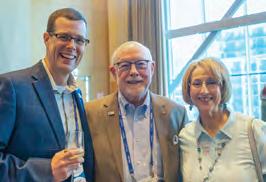Visions



The campus may have grown since our tower dedication ceremony seen here in 1970, but our commitment to optometric education is stronger than ever. Thanks to the support of our alumni and friends, SCO’s tradition of excellence continues today and into the future.

Our President Colleges mark the passage of time by milestone events. Commencement is one, as we celebrate the hard work and achievements of our graduates during their four-year journey in optometry school.
Orientation’s white coat ceremony is another. It was my privilege to welcome SCO’s 133 newest students as members of the Class of 2026 to campus. Collectively, SCO has presented thousands of white coats to our students through out our 90-year history. Over the past few months, we’ve enjoyed looking back at 90 years of progress and memo ries. President Emeritus Billy Cochran and I recorded a video where we looked at where we’ve come, our successes of today, and how we’re planning for the future. When we’ve posted photos from throughout the last 90 years to SCO’s social media, it’s great to read comments shared by alumni as they remember colleagues or a favorite faculty or staff member. In this issue, we’ve selected more archival
images to share for our 90th anniversary observance.
Another important milestone to celebrate is the 20th anni versary of The Eye Center’s opening on September 20, 2002. Thanks to the foresight and generosity of our Board of Trustees, alumni, and lead ership, their work continues to impact today’s optometry students more than ever.
Since its opening, The Eye Center has served as a model for other institutions. The clinical education that our students receive in this facility continues to prepare them for practice success throughout the nation.
SCO is also marking another significant milestone. For the first time in 53 years, our
faculty roster will be missing Dr. Glen Steele, ’69. Bubba, as he is affectionately known, is the longest-serving faculty member or employee in SCO history. Counting his arrival as an SCO student in 1965, Dr. Steele has spent 57 years as a member of the SCO family, for almost two thirds of SCO’s history!
His retirement is a bittersweet moment. We will miss his daily presence, even as we’re happy for his well-deserved pursuit of happiness with family and friends.
Fortunately for his many friends and colleagues, Dr. Steele is committed to remaining involved with SCO’s activities. I encourage you, too, to reconnect with SCO. We hope to see you at events here on campus or at receptions around the country.
Together, we can continue taking pride in SCO’s many accomplishments made possible by your support as we look ahead to the next decade when SCO celebrates its centennial.
ALUMNI MAGAZINE Fall 2022
PRESIDENT Lewis Reich, OD, PhD

VICE PRESIDENT FOR INSTITUTIONAL ADVANCEMENT
George Miller, CFRE
DIRECTOR OF COMMUNICATIONS Jim Hollifield
SENIOR CREATIVE DESIGNER Susan Doyle
WEBSITE AND SOCIAL NETWORKING MANAGER Erin Jaffe
SENIOR CREATIVE PROJECT MANAGER Philip Tribble
CREATIVE SERVICES COORDINATOR Melissa Hansbro
BOARD CHAIR
Christopher W. Wroten, OD ’02
BOARD MEMBERS
Allan L. Barker, OD ’75 Amanda Brewer-Lord, OD ’97 Betty Harville Brown, OD David A. Cockrell, OD ’81 Anita Davis, PhD
Vicki Farmer
Charles G. Glaser, OD ’74 Mark R. Kapperman, OD ’87 Charles W. Kinnaird, OD James K. Kirchner, OD Jennifer E. Lyerly, OD ’11 Stacey J. Meier, OD ’84
Dave Sattler
Lynn T. Shaw
FACULTY REPRESENTATIVE
Michael Dorkowski, OD ’04
STUDENT REPRESENTATIVE
Andrew Murphy, ’24
Visions is a magazine for alumni, faculty, staff, and other friends of Southern College of Optometry. It is published through the Office of Institutional Advancement. A digital version is available online at sco.edu/visions
Please forward comments, address changes, and contributions to: Institutional Advancement 1245 Madison Avenue Memphis, TN 38104-2222 800-238-0180, ext. 4
sco.edu
@SCOnews @southerncollegeofoptometry southerncollegeofoptometry SCO edu

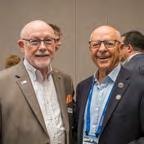


There are two massive oak trees flanking the front doors of SCO’s tower campus. Glen “Bubba” Steele, OD ’69, remembers when those oaks were saplings.

In his 53 years at SCO — as a student, a clinic staff doctor, chief of vision therapy and inaugural chief of pediatrics — Dr. Steele has witnessed the tenure of four college presidents and become the school’s longest-serving faculty member. He has taught thousands of budding optometrists, including many parentchild pairs. (Steele dubs the second-generation students his “grandchildren.”)


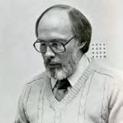
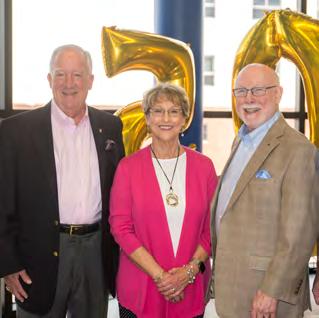
Today, Steele’s former students are represented in every corner of the optometric world. They are advocates, educators, and practicing doctors of optometry. “The thing that really gives you pleasure is when you’re invited to speak at a state [optometry] meeting — I’ll use Louisiana as an example — and you’re sitting there at the banquet. They’ve got 10 people being installed as officers and nine of them were your students,” Steele says. “It’s being able to have a link like that.”

GLEN STEELE , OD ’ 69, RETIRES AFTER 53 YEARS ON FACULTY
pon his August retirement, Steele left behind not only a half-century-long legacy at SCO, but an indelible mark on the optometry profession as a whole, most notably in the area of pediatric optometry. He pioneered the national public health program InfantSEE® to bring free vision assessment to babies, led optometric advocacy organizations, and presented some 200 lectures around the globe on the importance of pediatric optometry. Steele has been named Tennessee’s Optometrist of the Year, one of Optometric Management’s 10 Optometrists of the Decade, and an inductee into the National Optometry Hall of Fame.

More than five decades after taking his first class at SCO, Steele still hasn’t lost his passion for vision. “I don’t think there’s a better profession than the profession of optometry,” he says, “and it’s because of the people.”
On Steele Road in rural central Tennessee, some 40 miles west of Nashville, sits a milking farm that has been in the Steele family since the mid-1800s. It’s where Glen Steele and his younger sister grew up, learning the value of a strong work ethic from their mother, who became perhaps the first female elected official in Dickson County, and their father, who battled migraine headaches without medication yet never missed a milking.
With plans to become a medical doctor, Glen Steele enrolled in Martin Methodist College, (now the University of Tennessee Southern) and played second base on the college team. It was a baseball teammate who gave Steele his first glimpse of Southern College of Optometry, showing Steele a catalog from the 30-year-old school that the teammate’s mother was encouraging him to attend.
The teammate ended up going to law school, but Steele was intrigued by optometry. After shadowing an optometrist near his hometown, Steele applied to SCO in the spring of 1965 and was accepted into the fall class. “It was an opening to be able to help people,” Steele says.
Steele hadn’t spent much time in Memphis before moving into a fraternity house on the SCO campus. He practiced his finger skills on the house’s phoropter and enjoyed his “incredible” optometry class with J.M. Jamieson, OD, but Steele’s first year at SCO was a struggle. He remembers scoring a 12 percent on his first ocular disease test (the subject was “pathology” then) because his spelling skills were lacking. “ I understand why [the professor] was doing it,” Steele says now. “He didn’t want our graduates to be sending letters of referral full of misspelled words.”
Because he had to repeat some courses during his second year, Steele was required to stretch what was then a three-year optometry program into four. He moved out of the fraternity house and into an apartment with more academically-oriented students and worked hard to improve his grade point average. By the spring of his second year, Steele was treating his first patients. “Clinic, I loved. I shined,” he says. “I had more opportunities for clinic because I had extended time.” By his graduation in 1969, Steele had fit more contact lens patients than any other student in his class. (Steele’s graduating class of about 90 optometrists
included just three women. By comparison, SCO’s class of 2022 was made up of 53 men and 80 women.)
Steele stayed on at SCO, taking a position as a contact lens clinic staff doctor and also filling in at the vision therapy clinic. Steele remembers teaming up with L. Allen Fors, OD ’69, that winter to move furniture into the newly-constructed SCO tower in preparation for its January opening. It was around that time that a faculty member asked the two recent graduates if they wanted to advance their knowledge of vision therapy by attending a year-long fellowship program at the Gesell Institute of Child Development at Yale University. Though at first he didn’t know where Yale was located,
Dr. Steele with colleagues from the Class of 1968: Drs. Frank Gibson, W.C. Maples, Billy Cochran, Neill Marshall, and Dick Powell
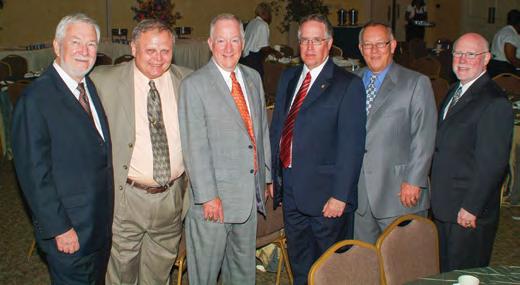
“I don’t think there’s a better profession than the profession of optometry, and it’s because of the people.”
Steele, who had married a year earlier, discussed the opportunity with his wife, Cleta, and decided to attend. Fors joined him.
In a time before optometric residencies, the Institute, named for the late pediatrician and psychologist Arnold Gesell, gave Steele and Fors a unique opportunity to delve deep into the world of pediatric vision. It was there that Steele learned how critical vision is to a child’s overall development. “What’s the first thing you do when something brushes up against your hand? You look at it,” Steele says. “What about the kids that have difficulty linking those two together? It starts with a baby. They see their feet up in the air, and they reach for them. [Vision] is that instigator, that leader, in all of development.”
When the fellowship ended, Steele and Fors returned to SCO. Fors was a talented classroom instructor, while Steele worked in the vision therapy clinic, primarily with children. “I’ve always been a big kid,” he says. “There’s a kid in all of us and working with children just lets that come out.” (Before Fors’ death in 2014, SCO faculty established the Glen T. Steele, OD, and L. Allen Fors, OD, Developmental Endowed Scholarship, which now awards two annual $1,000 student gifts to honor the doctors’ contributions to vision therapy.)
Steele, who later became SCO’s chief of vision therapy, thrived on teaching his students how
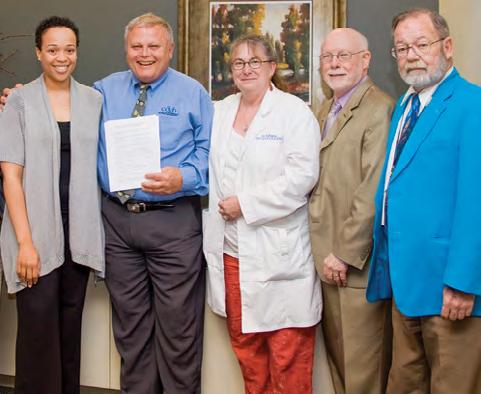
the simplest optometric technique could make the biggest impact on a young life. A few years ago, a mother brought her 10-week-old baby to SCO, concerned the child might be blind. Steele confirmed that the baby wasn’t focusing and that his visual reaction wasn’t engaged. But rather than assuming the child was blind, Steele suggested a technique to “wake up [the baby’s] visual pathway.” He instructed the mother to bring the child into a dark room and turn on a light, continuing the exercise over time until the child began to show a visual reaction. Six months later, the baby’s vision was judged to be fully normal in subsequent examinations.
“How much of a change I made in a child’s life, we’ll never know,” Steele says. “But this kid is operating as a normal four-year-old. What would have happened if they had just made the assumption he was blind?”
Kurt Steele, OD ’95, who calls Glen Steele his “optometric dad”, says he never forgot his instructor’s passion for vision therapy. “He really appreciates the chance to get to help these kids,” says Steele, who also bonded with his teacher over their mutual love of Tennessee football. Two decades after buying into an eastern Tennessee optometric practice, Steele hired Emily Eisenhower-Baxter, OD ’17, another of Dr. Steele’s former students, to bring vision therapy services to their rural patients. “I’ve always wanted to do that in [Glen Steele’s] honor,” he says. “He’s one of the optometrists of the century.”
Eisenhower-Baxter, president-elect of the Tennessee Association of Optometric Physicians, says she uses a technique developed by Steele — and taught at SCO — in her vision therapy practice every day. “Just look retinoscopy” refers to using a retinoscope to observe whether a child’s visual reflex is engaged. “[Steele] would say, ‘You can get the refraction or the glasses prescription eventually, but look at the reflex and you’ll be
able to see how their focusing system works,’” Eisenhower-Baxter says. A child could have perfect 20/20 vision, she adds, but struggle with reading comprehension because her eyes are unable to focus. “In school, you’re so number-driven,” Eisenhower-Baxter says. “You’re always trying to get the right prescription for the patient. What [Steele] would say is, ‘Just look at the reflex. Just look.’”
Dr. Steele’s teaching honors include SCO’s Lifetime Achievement Award and induction into the Tennessee Independent Colleges and Universities Association Hall of Fame. “Our job is much more than just teaching [students] facts,” Steele says of his educational philosophy. “Our job is to teach them how to be a professional, how to be involved in your community, and how to be involved in your profession. I think that’s what SCO does so well.”
When Steele wasn’t teaching in SCO’s clinic, he was treating patients at a private practice he ran for four decades. After Cleta Steele died in the 1980s, leaving her husband and two sons, Glen Steele married a vision therapist named Brenda. The couple recently celebrated their 33rd anniversary.
Dr. Steele, who joined the American Optometric Association as an SCO student in 1966, also made time for advocacy, which he says is an important part of being an optometrist. He remembers when doctors of optometry couldn’t put drops in patients’ eyes, administer injections, or treat certain diseases — until they banded together to lobby for legislative change. When other optometrists ask Steele how he became such a deft practitioner, he reminds them that he studied optometry before optometrists could dilate eyes. “I had to look through a keyhole to see what was going on,” Steele recalls. “Now we can open the window.”
Dr. Steele also advocates for his patients. Andrea Thau, OD, a New York City optometrist and past AOA president, recalls working with Steele on a 2020 American Public Health Association policy statement that called for reduced barriers to children’s vision care services. The statement lists detailed steps governmental agencies can take to increase access to eye care for all children. It is one of the dozens of policy statements, academic posters, and fact sheets that Steele has contributed to over the years. “[Steele] is the best kind of leader,” Thau says. “He leads by example and inspires us all to continue his legacy.”
It was during a lecture series for the AOA in the mid-1980s that Steele was christened with his “optometry name,” Bubba. Four optometrists — two New Yorkers, one from Wyoming, and Steele — traveled the country together and became good friends. One day, one of the New York doctors referred to Steele as “Bubba” in a joking nod to his rural southern roots. “I looked at him and said, ‘That’s Dr. Bubba to you,’” Steele says. The name stuck. “It gives me an identity that’s different from being just a faculty member,” he says. Now, just about everyone in the world of optometry refers to Steele as “Bubba” — except for students, who don’t earn that honor until they graduate.
In addition to his work with AOA, Steele is a past president of the College of Optometrists in Vision Development and the Optometric Extension Program Foundation. He’s also been an active member of the Tennessee Association of Optometric Physicians, the American Public Health Association, and SECO International, an optometric education provider.
A spur-of-the-moment conversation at a SECO International meeting in 1998 brought together Steele’s passions for children’s vision, advocacy, and education. W. David Sullins, Jr., OD ’65, who
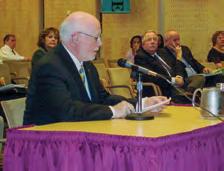
Dr. Steele has tirelessly promoted the InfantSEE program; entertainer Tom Sullivan joined him for several years in the effort, below.

As a student he excelled at contact lenses, but Dr. Steele’s interest developed through the years and made him a leading pediatric vision expert.
had just attended a discussion on bringing vision therapy services to school-aged children, pulled Steele aside to say he thought a child’s first eye exam should happen in the first year of life. “I said, ‘That’s my background,’” Steele recalls. “‘Let’s go.’”
The goal was simple enough: provide infants aged 6 months to 12 months with a no-cost comprehensive eye and vision assessment.
“Nobody was taking care of the babies,” Steele says. “Nobody was seeing them for a well check.”
But it took five years of education and advocacy for the program that would become InfantSEE to find a home with Optometry Cares – The AOA Foundation. In 2005, InfantSee was launched on The Today Show featuring special guest President Jimmy Carter, a champion of pediatric eye care whose grandchildren had amblyopia.
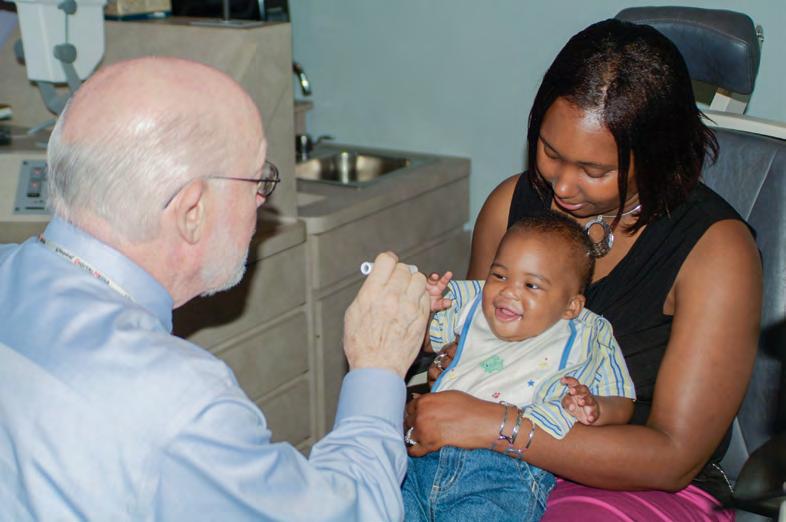
“It is a true public health program,” says Steele, who would go on to chair the AOA’s InfantSEE committee for a decade. “There’s no charge to the parent or the insurance company. It is to start these babies on an earlier track to solving their [vision] problems.”
Sharon Berger Moscow, OD ’80, recalls bringing babies from her private practice in Atlanta to a SECO International continuing-education class nearby. There, Steele demonstrated infant vision assessments on the babies to encourage optometrists to become InfantSEE providers. “I would like to think that I just brought perfect babies down there, but he was so good that they all seemed like perfect babies,” says Moscow, who credits Steele with inspiring her vision therapy specialty. “Dr. Steele is soft spoken. He’s very calm. You have to be calm and gentle and friendly… He engages the children just by his nature.”
Earlier this year, Steele received the 2022 Dr. W. David Sullins, Jr. InfantSEE Award, presented by the AOA InfantSEE and Children’s Vision Committee, for his contributions to the program. “I just hope the attitudes of care for young children and children can be carried on,” Steele says. “That is what I see as my best life’s work.”
Committee chair Jennifer Smith Zolman, OD, says Steele, who she worked with on the committee for a decade, has been “invaluable” to InfantSEE. “‘Bubba Steele is one of the most brilliant and well-versed doctors of optometry in the country, if not the world, on the subject of infant vision, infant development and children’s vision,” she says. “I imagine it’s got to be more than a million children that he has impacted directly or indirectly. But I’m not sure you could really quantify his impact.”
With the launch of InfantSEE, Steele began garnering national and international attention for his work on children’s vision. He has since spoken in Australia, Chile, Denmark, England, France, India, Italy, and Switzerland, among other countries. Janette Dumas Pepper, OD, an associate professor at SCO and coordinator for student diversity and inclusion, first met Steele during her pediatric residency at SCO in 2003. She recalls asking Steele how he kept up his seemingly non-stop schedule without slowing down.
“There is a drive in him, a passion, if you will, that propels him to keep going,” Pepper says. “His desire to ensure the value of pediatric eye exams fueled his efforts and enabled him to fight through the fatigue of meetings, travel, conference calls.”
Today, more than 160,000 babies have been screened through the InfantSEE program.
One of those babies, an eight-month-old from Arizona named Grace Zellers, was found during her InfantSEE exam to have retinoblastoma.
Grace is now a teenager, and her mother credits InfantSEE with saving her life. But for every dramatic story like Zellers’, there are hundreds more babies who were set on the right track for a life of eye care because of InfantSEE, says Rebecca Hildebrand, AOA’s chief operating officer.
“You can’t put a number on the impact that [Steele] has had on the public health of communities,” she says, “and on people’s lives.”
Steven Reed, OD ’95, AOA vice president and liaison to Optometry Cares–The AOA Foundation, says InfantSEE is a core pillar of the foundation and a “uniting purpose” for the association’s members. “All people want to give back in some way,” Reed says, and Steele gave optometrists the chance through InfantSEE.
“Dr. Steele is somebody who I don’t believe set out with the mission to leave a legacy. He just set out to do what was right. . . and, as a result, he has left a tremendous legacy.”
While InfantSEE was in development in 2002, SCO opened The Eye Center, a new clinic that would move the once-connected pediatrics and vision therapy clinics onto different floors. SCO administrators asked Steele which specialty he wanted to lead, and he surprised them by choosing pediatrics. “[Pediatrics] was a home
As a former college baseball player, Dr. Steele was invited to throw out the opening pitch at a Memphis Redbirds game in 2019.

for me,” Steele says. “That was where I needed to be.” He served as chief of the pediatric primary care service until stepping down in 2010. Daniel Smith, OD ’94, replaced Steele in 2011.
Marie Bodack, OD, SCO’s current pediatric primary care chief, says Steele helped the service grow into the extensive, birth-to-18 practice it is today. “He makes it easy for the students to realize you could see a little kid,” she says, remembering how on slow clinic days Steele would spend extra time teaching and talking to students. “It’s going to be a loss that he’s gone.”
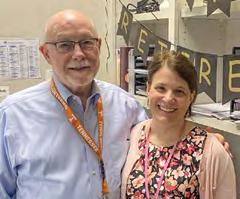
Steele’s legacy will live on at SCO — through the exam room in SCO’s pediatrics suite that was named in his and Brenda’s honor in 2015, the annual student scholarship, and the many faculty colleagues who know they can still depend on him for advice and guidance. “I don’t have any doubt that if anyone needed to reach out to him when he’s in retirement that he would be willing to help,” Bodack says. “His presence will be here.”
Steele says he and Brenda don’t have big plans for his retirement — there’s no bucket list to work through — but they want to take a train trip across the United States, spend some off-season time at the beach, visit the Noah’s Ark replica in Kentucky, and relax at the old family farm on Steele Road. “It’s bittersweet,” Steele says. “There are people who count down their days in minutes and seconds to the time they retire. I’ve never felt that. It’s been such a privilege to work with SCO.”
In fact, Steele would only commit to taking one full semester off from the college. “We’ll reevaluate then,” he says, adding that he hopes to return as a clinic consultant. “I feel good. I feel like I could continue on.”

Surrounded by his family, colleagues, former students, and the largest gathering of SCO retirees in recent memory, Dr. Steele was honored with an on-campus reception on Tuesday, August 23.
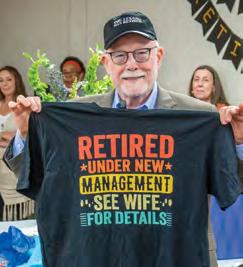
Sharing remarks and memories at the reception held in his honor were SCO President LEWIS REICH, OD, PhD, SCO President Emeritus BILLY COCHRAN, OD ’68, SCO Professor Emeritus JIM NEWMAN, OD ’73, SCO Professor GLENN GOLDRING, OD ’78, and SCO Vice President of Clinical Programs, JAMES VENABLE, OD ’89. Dr. Steele’s retirement was covered by two local television stations and the ophthalmic press.
Dr. Steele also recorded a video sharing his memories, thoughts about InfantSEE, and his future plans. An excerpt can be found on sco.edu/ steele. Alumni and friends can leave their well wishes at this site.
Make a gift in honor of Dr. Steele to support the Glen T. Steele, OD, and L. Allen Fors, OD, Developmental Vision Endowed Scholarship on our website at sco.edu/steele

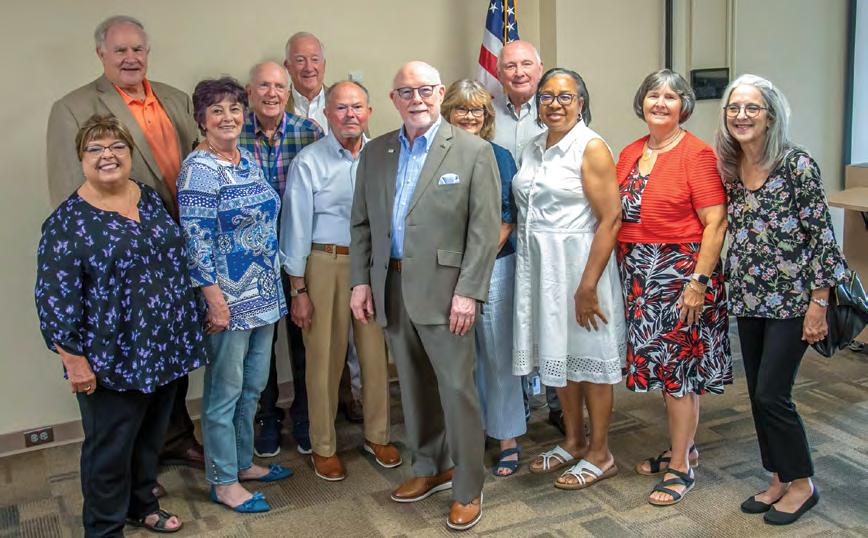
Your gift is a fitting way to honor Dr. Steele’s work by encouraging future students to follow his lead in the field of vision therapy and pediatric optometry.

SCO was founded on Washington Avenue near the site of today’s LeBonheur Children’s Medical Center.

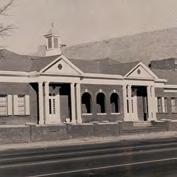
When Southern College of Optometry was founded in 1932, its earliest students and faculty undoubtedly devoted all their focus on succeeding. It’s unlikely that a lot of thought was spent on envisioning what SCO’s future would like into the next century or in the year 2022.

At 90 years, SCO is still going strong as you’ll see in these photos from throughout the college’s 90-year history. The Eye Center is also celebrating its 20th anniversary, also documented in these pages.
Ten years from now when SCO turns 100, today’s students will have added to our history of educating many of the nation’s top ODs.

Untold scores of patients have benefited throughout the years thanks to the education and training that SCO alumni have received in Memphis and at externship sites across the country.
“SCO is in a strong position, thanks to the support of our alumni through the years,” said SCO President, Lewis Reich, OD, PhD.
“The SCO family can be proud in all that we’ve accomplished.”
From an outstanding clinical education reputation to excellence in board scores, SCO’s students have benefitted from stricter
admission standards and an increased responsibility for top faculty, said SCO President Emeritus Billy Cochran, OD ’68.
“It took a dedicated community of faculty, staff, and administrators to position SCO to meet the demands of optometric education in the 21st century,” Dr. Cochran said.
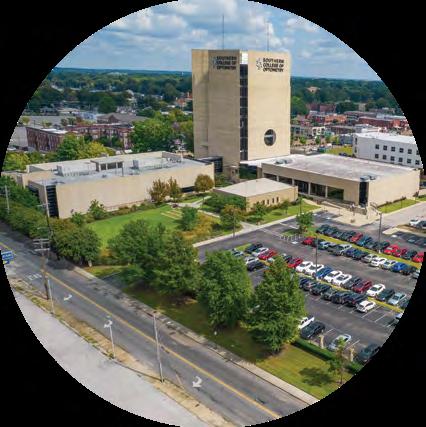
The earliest students and faculty back in 1932 could have only have dreamed about laser procedures or the modern technology used at SCO today. Looking forward, Dr. Reich said SCO is committed to supporting efforts to enhance the scope of practice.
Between now and SCO’s 100th birthday, the college is studying ways to improve our campus and facilities to keep SCO’s progress moving forward. “We’re excited about the opportunity to do more to attract the best and brightest students and to serve our patients here at SCO,” Dr. Reich added.
Visit SCO’s YouTube feed, linked at the bottom of the SCO’s website homepage, to hear more of Drs. Reich and Cochran talking about SCO’s 90th anniversary and our future plans.


The SCO campus has changed through the years to meet the needs of students. The first campus was located on Washington Avenue; in the early 1950s, the campus moved to Union Avenue. SCO’s Tower repositioned the front of campus to Madison Avenue in 1970. The Eye Center was added in 2002 and a new academic complex was dedicated on the site of the former back patio in 2013.
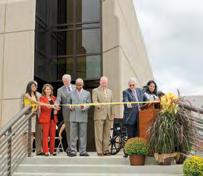



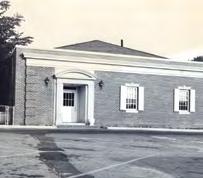
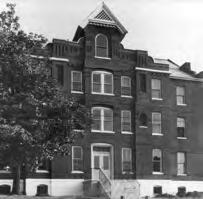
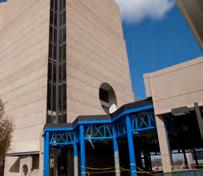
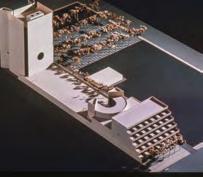
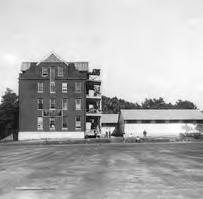
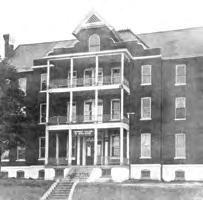

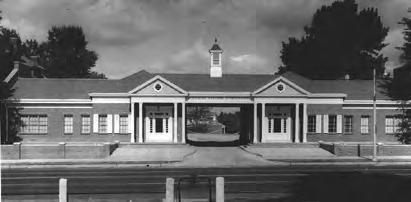
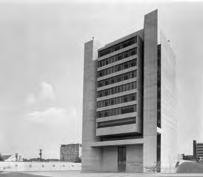




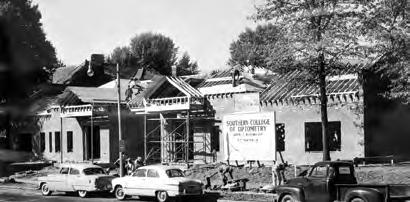
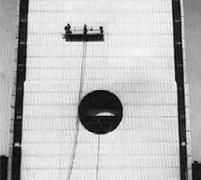




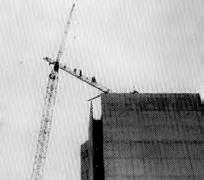

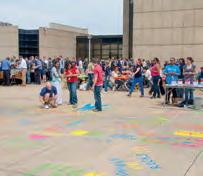
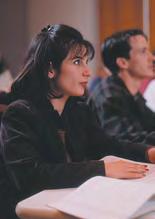

SCO’s academic program has kept pace with advances in scientific advances and teaching methods through the years. These images represent different phases of instruction through the years, including a 1930s fee sheet up to today’s modern classroom where classes are video recorded and students take notes on laptops.

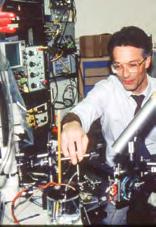
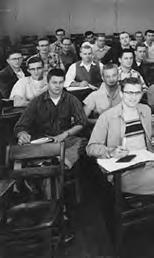


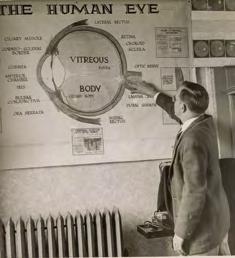
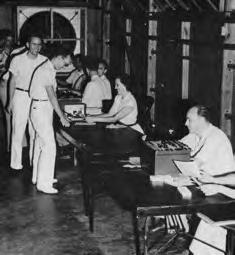
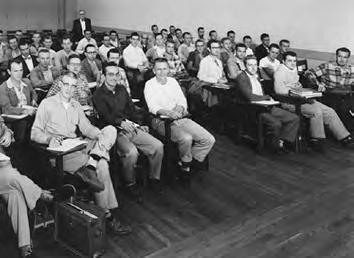



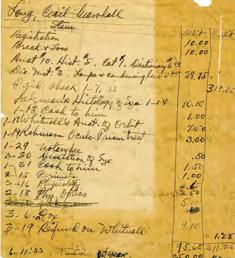



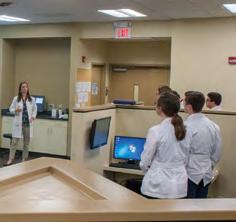
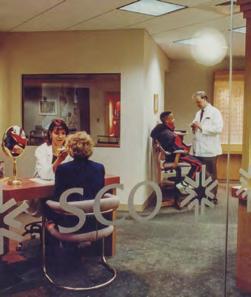
A rigorous clinical program has long defined the intense preparation that SCO’s graduates receive. Clinical instruction has also kept pace with scope of practice changes, including the addition of therapeutics and pharmacological advances to state-of-theart technology providing the latest in laser and minor surgical procedure training.



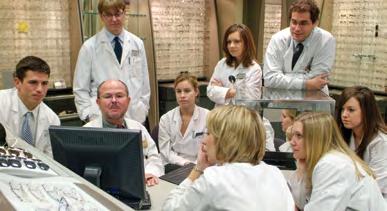
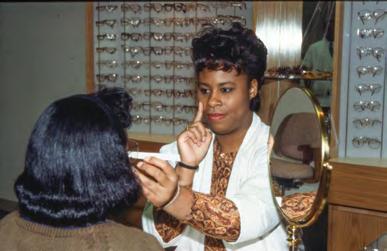

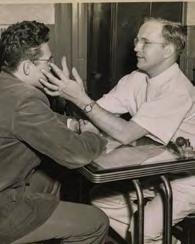
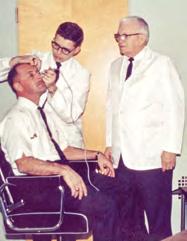



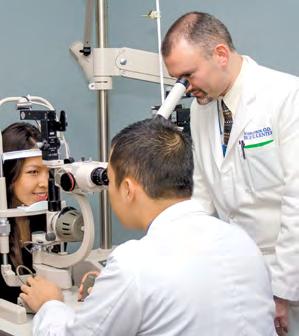


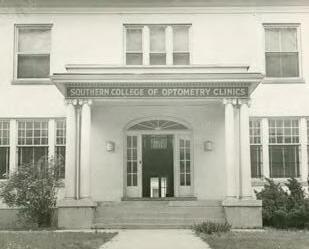
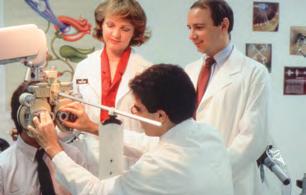



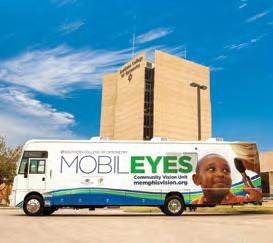




SCO students make friendships that last a lifetime. Going through the optometry program together builds relationships, including practice partnerships, marriages, and even children who have followed in their parents’ footsteps. Today’s student body is more diverse than ever, with women accounting for approximately two thirds of enrollment.
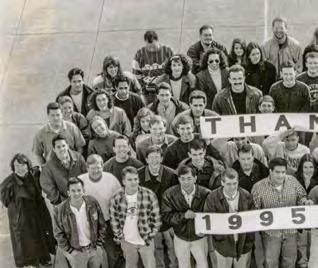
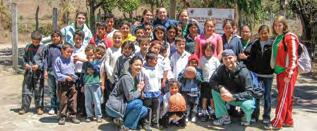


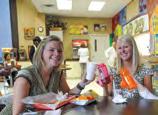


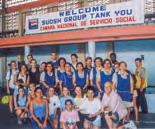



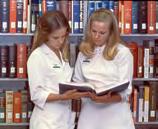

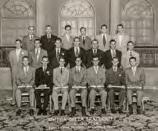
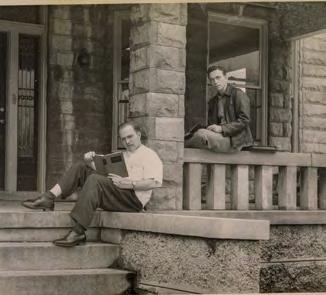
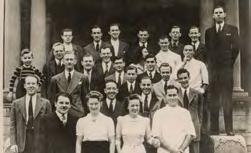


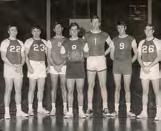





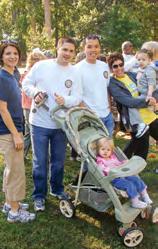


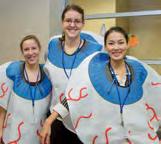
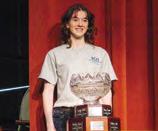

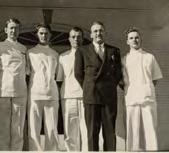



SCO’s students also benefit from an active encouragement to pursue service to others and advocacy to benefit the profession. Optometry leaders interact with our students, from State Day to the legislative arena, from mission trips to returning to campus to share their knowledge and expertise with the leaders of tomorrow.

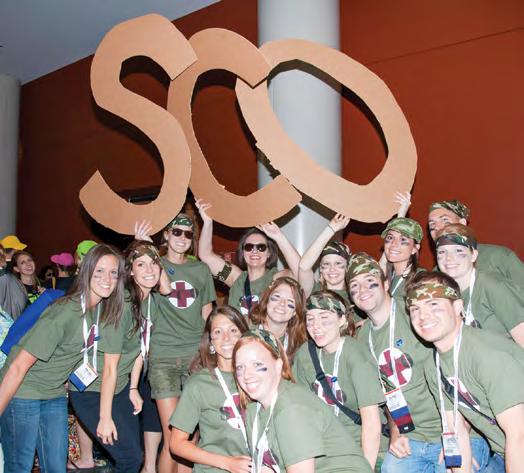
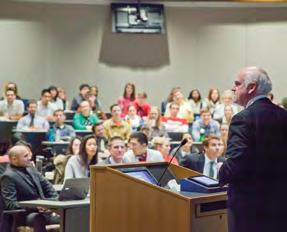
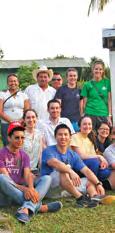


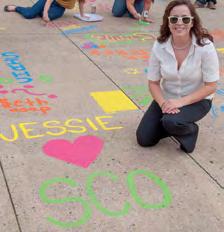

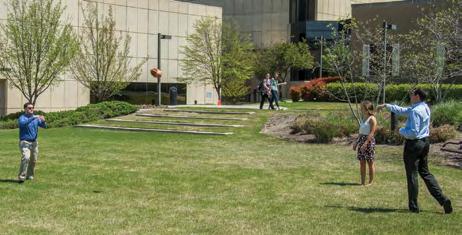

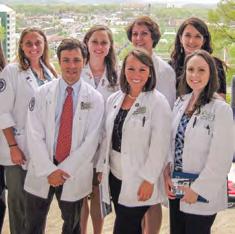
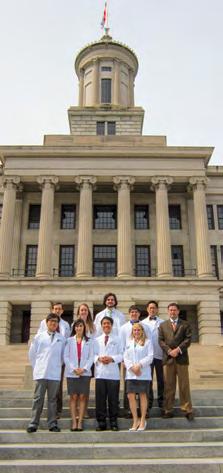




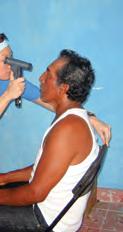



No matter the decade, commencement ceremonies still represent the pinnacle of pride in the accomplishment of completing the optometry program.

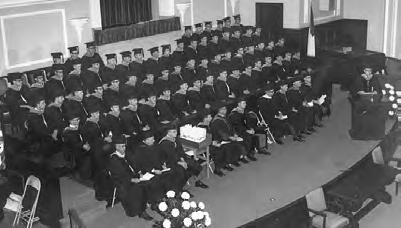
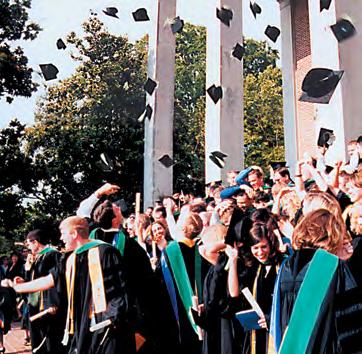

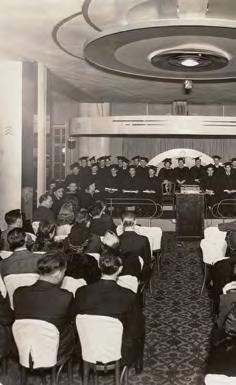
National and regional meetings, Convocation, and community service also mark milestone moments in the lives of our students.


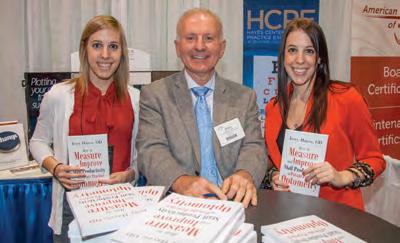





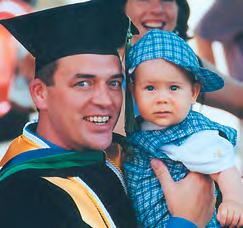


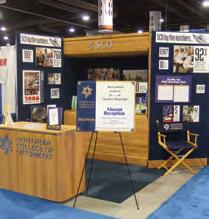

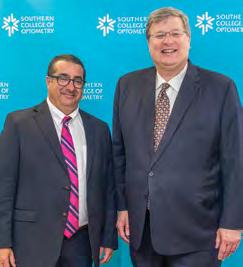


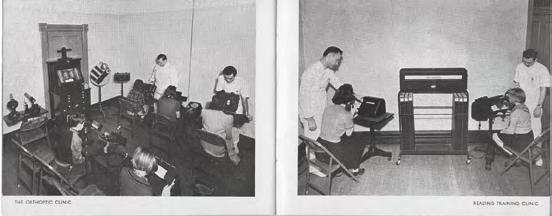
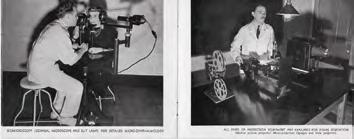
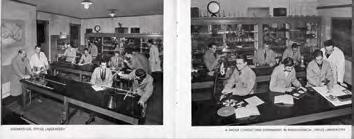


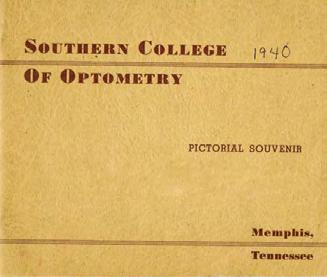
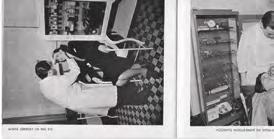



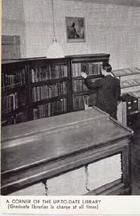

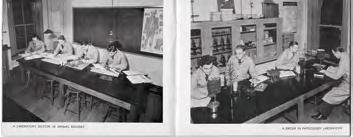


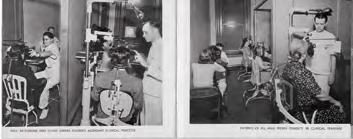
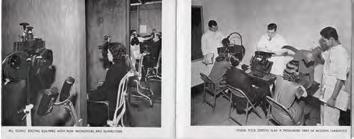

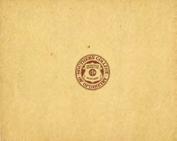

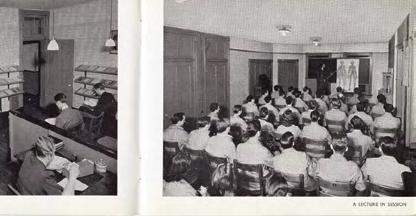

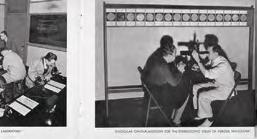


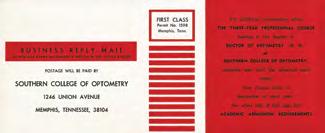

These printed mementos document moments in SCO’s history, including the handwritten first graduation program for the Class of 1934, promotional materials, newsletters, and a page from SCO’s yearbook, SCOPE.
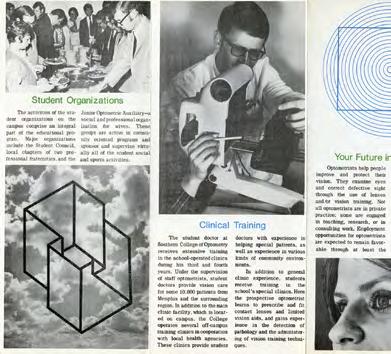
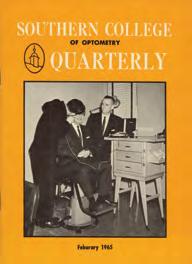
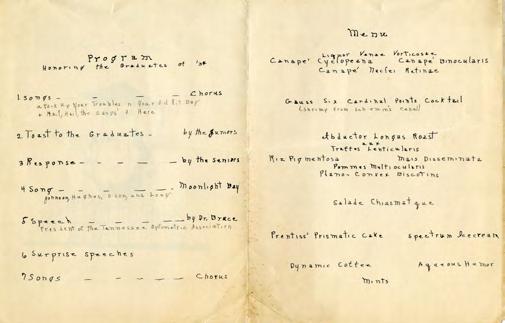

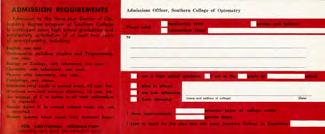
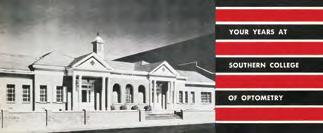


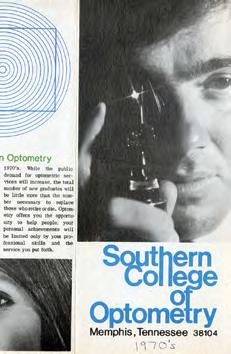
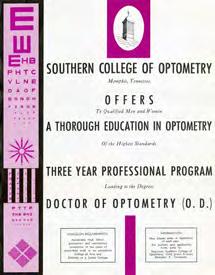


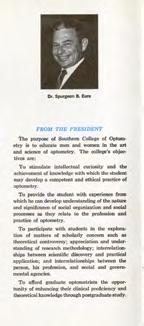


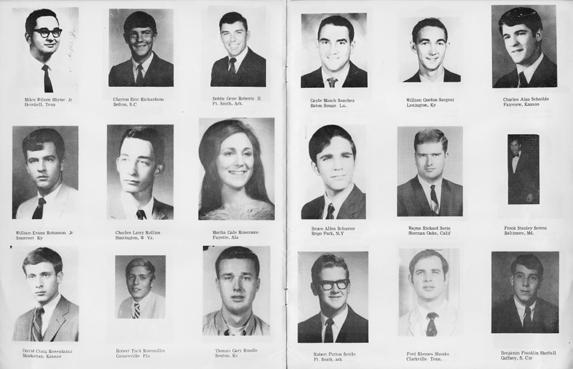

Just as our campus facilities or technology have changed through the years, the faces change, too, but there’s one constant in SCO’s 90year history: committed faculty and staff members who faithfully carry out the college’s mission to benefit our students, alumni and patients.



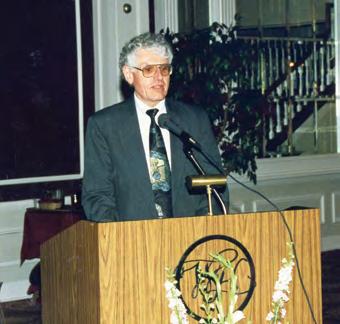
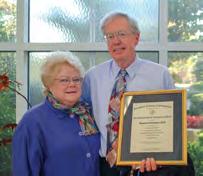
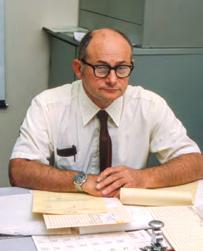

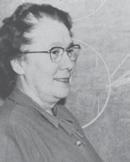
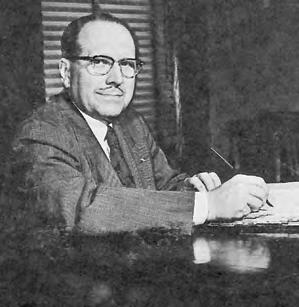


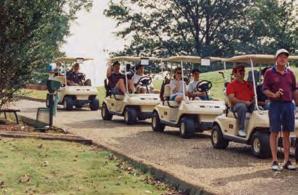



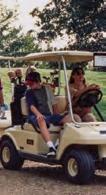
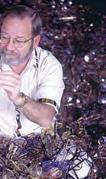

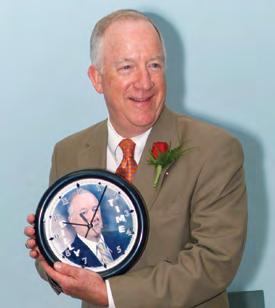



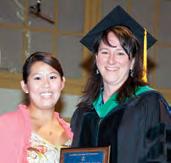

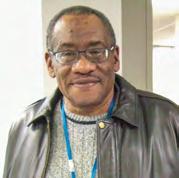

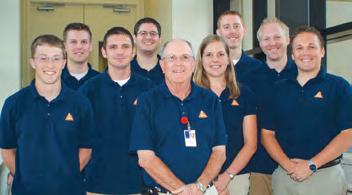
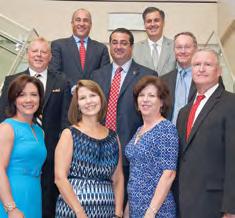
Years beyond graduation, many alumni still fondly remember the faculty and staff members whose expertise, guidance, support, and encouragement made a big impact in their time at SCO.


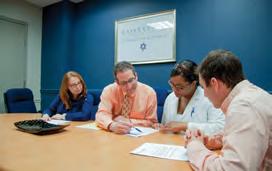


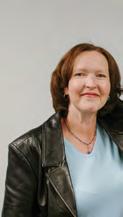
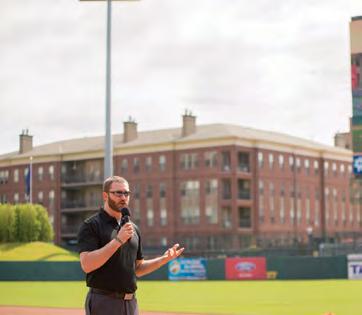

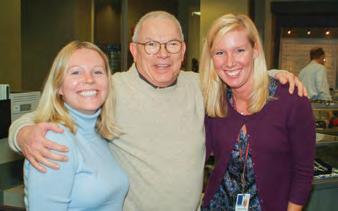


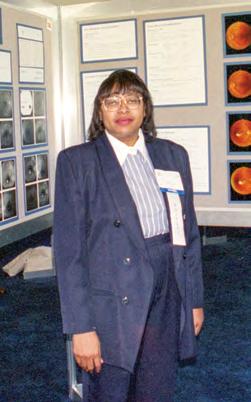
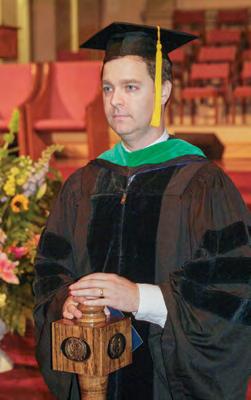



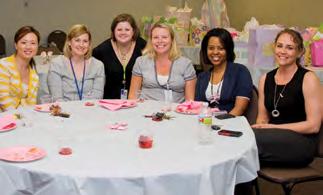



SCO’s approximately 7,000 alumni include leaders of the profession at the national, state and regional levels. Friends of the college join our alumni in supporting college programs that sustain SCO’s ability to recruit top students year after year.

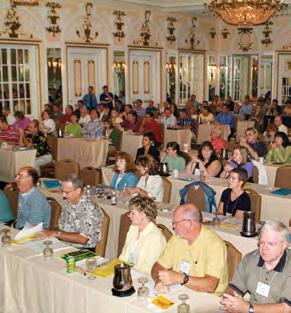


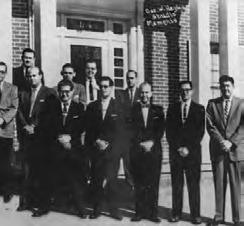
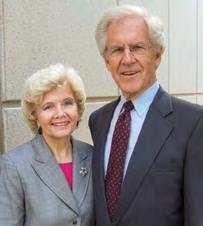
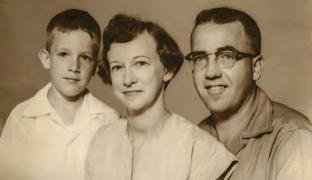


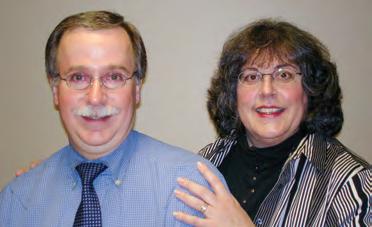


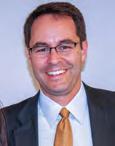


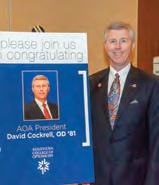
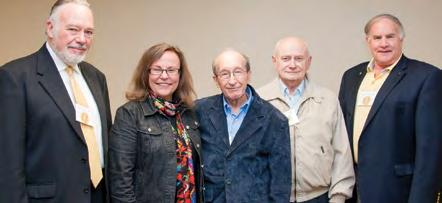
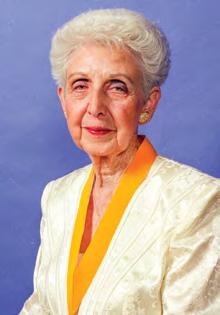

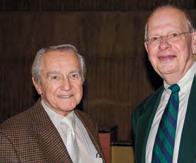
From commencement to Homecoming and receptions held during state and national meetings, SCO’s alumni and friends represent the excellence that defines our institution as one of the nation’s leading optometry colleges.
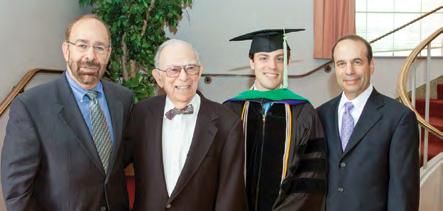

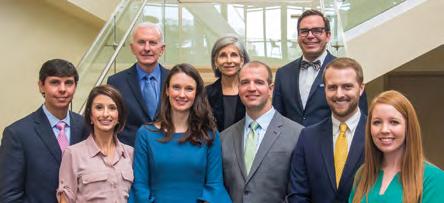

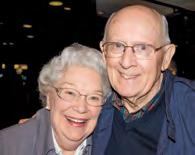
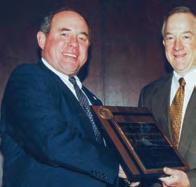








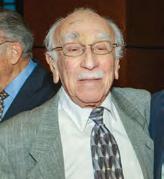
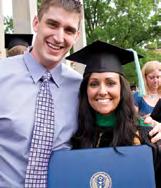

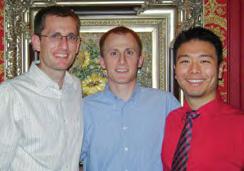



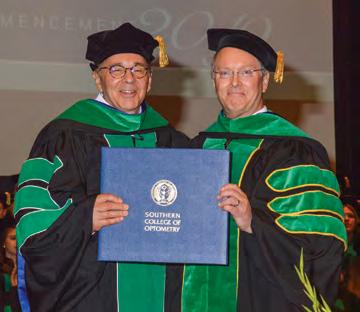

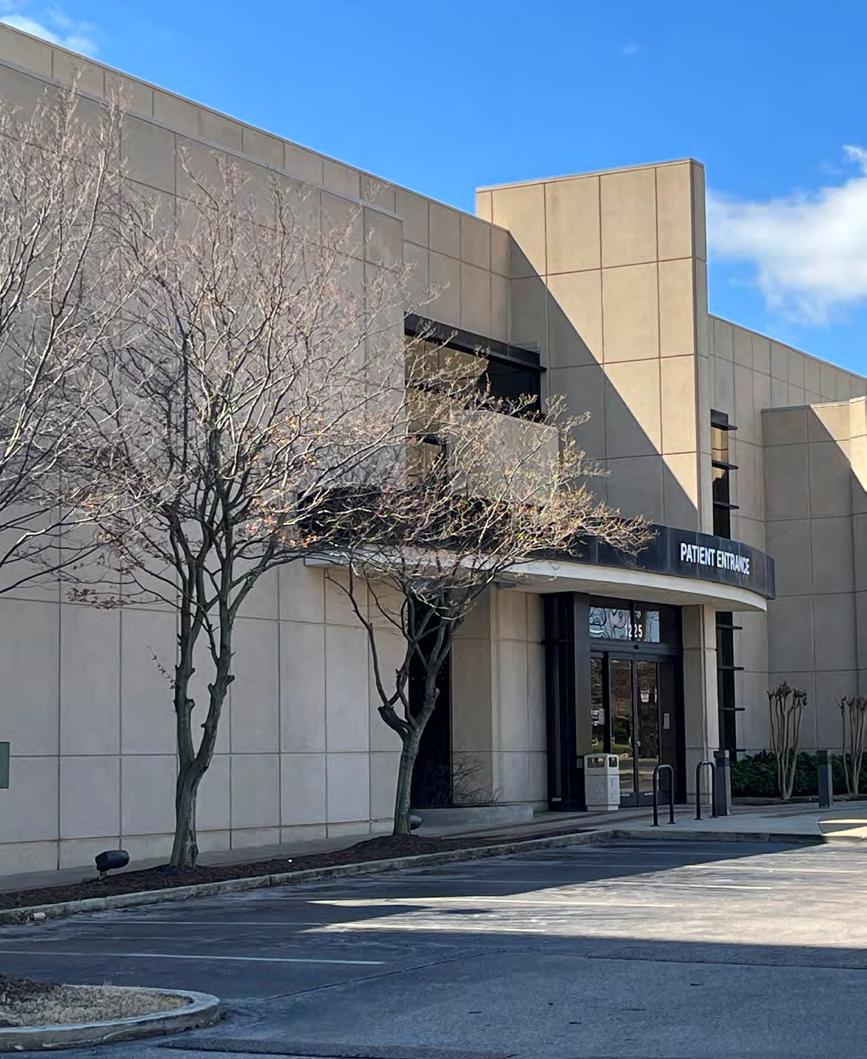
The late 1990s marked a time of success for Southern College of Optometry. The college’s academic and clinical programs had been strengthened. SCO’s reputation for clinical education meant that the college appealed more to top applicants from outside the region on a national level. Board scores had improved, along with finances after the start of a development program with the support of alumni.
COCHRAN, OD ’68, had been president for 15 years in the late 1990s when he began planning renovations and improvements for the college’s clinic, then located on the first floor

“We were talking about maybe adding 10,000 square feet or so more than we already had,” Dr. Cochran
AC WHARTON had just joined SCO’s Board of Trustees. He also served on the Board of Methodist Hospital across the street and appreciated that Methodist had committed to staying in the heart of the Medical District after Baptist Hospital closed and moved out east.
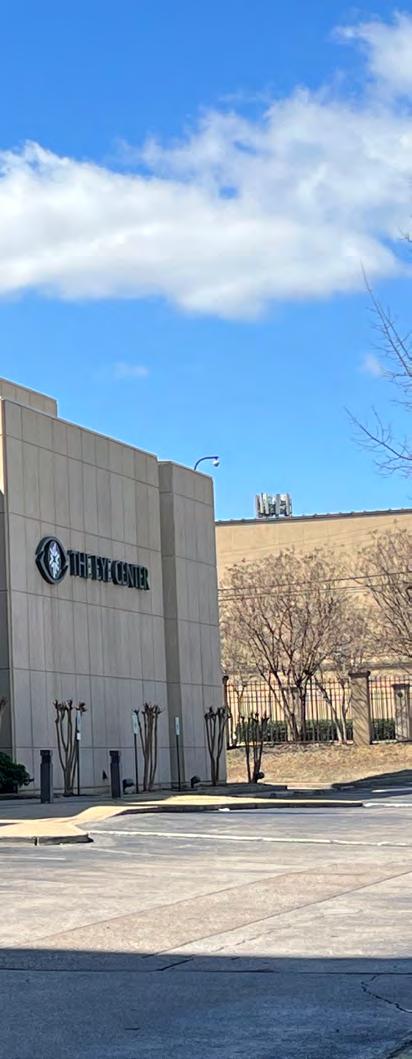
Wharton challenged the board to think bigger and think about constructing a standalone, state-of-the-art eyecare facility to enhance the clinical education of SCO’s students while simultaneously meeting the needs of patients in the heart of Memphis.

“In today’s world, if you are not moving forward, you’re standing still,” Mayor Wharton observes. “If you’re not getting better, you’re going backwards.”
The suggestion gave Dr. Cochran and the board pause. “We were out of space,” Dr. Cochran recalls,” and we needed more space just as the scope of practice was really expanding.”
After sharing the idea with SCO’s faculty, the administration took the plan to alumni. With the Board’s blessing, a fundraising
Dr. Cochran credits the leadership of FRANK GIBSON, OD ’68, then Vice President of Clinical Programs, JIM BURKE, OD ’77, then Chief of Staff, and former Physical Plant Director HERMAN GEORGE for leading the design process for the 51,000 square foot facility.
A groundbreaking on May 25, 2001 was followed by construction on the $7.1 million project. The venture was enthusiastically backed by alumni with the remainder funded through the sale of a bond issue which was retired just two years ago.



“In terms of capital projects,” this thing was turned around in no time,” Mayor Wharton says.
“Usually an idea like this will take three to five years, but sight is too precious to delay. That drive was there, from conceptualizing it to turning the shovels.”


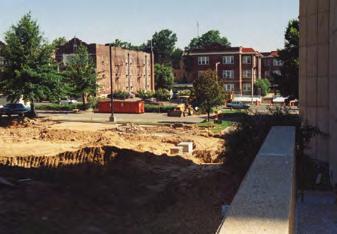 Construction began on The Eye Center in 2001 on the site of former parking and the Admiral Benbow Inn, demolished to make way for new parking spaces at the back of campus.
Construction began on The Eye Center in 2001 on the site of former parking and the Admiral Benbow Inn, demolished to make way for new parking spaces at the back of campus.
On September 20, 2002, The Eye Center was officially dedicated, with newly elected Shelby County Mayor Wharton joining Board Chair JAMES BOUCHER, OD ’61, and others, including representatives from UT Health Science Center and Methodist Healthcare. Then Faculty Chair RICH GOODSON, OD ’66, and SGA President MATT DREW, OD ’04, also participated in the ribbon-cutting ceremony.
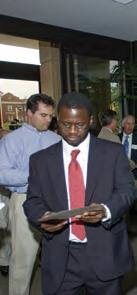

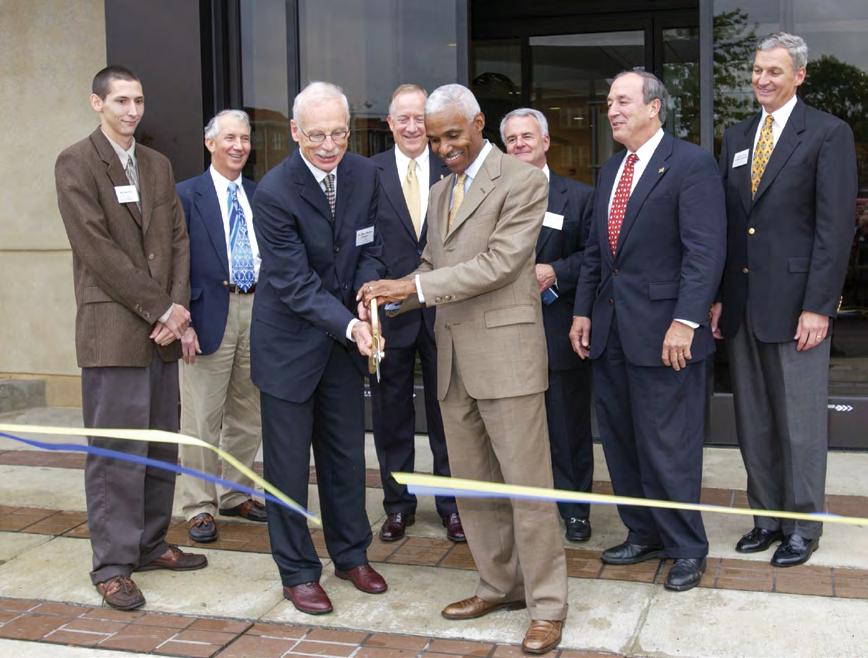
Twenty years later, Dr. Cochran says that the decision to build The Eye Center continues to benefit SCO. “It’s not only helped in our clinical education process, but it helps in recruiting faculty and students who come from all over the country and see this facility on tours. Mayor Wharton had a vision and it’s paid off for SCO.”
In terms of higher education, this is one of the richest corners right in the middle of Memphis, and I don’t mean that in terms of only property values,” Mayor Wharton says. “It has a community benefit and world class eyecare happens right here.”
The Eye Center’s dedication ceremony included attendance by donors whose generosity helped fund the project, including several pictured here with plaques that continue to recognize their support 20 years later.
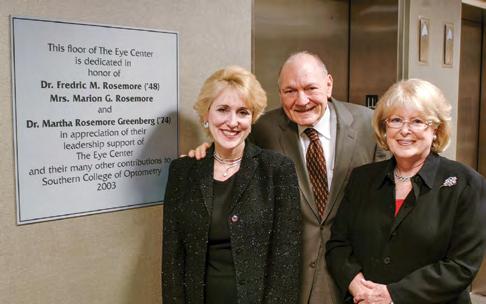



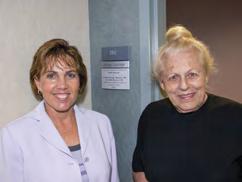



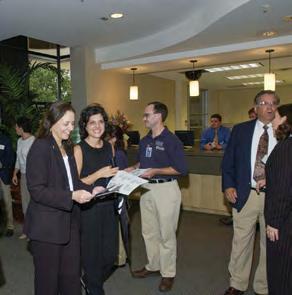
For more than 20 years, The Eye Center has provided exceptional patient care to tens of thousands of patients each year as a dedicated team of faculty share their knowledge with optometry students and residents.

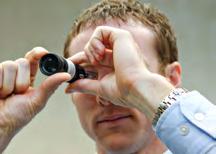
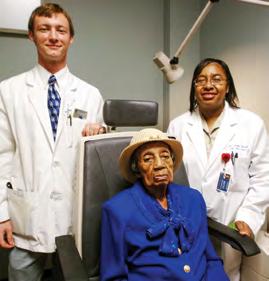
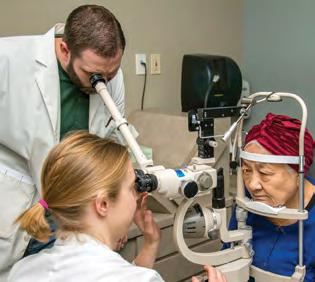


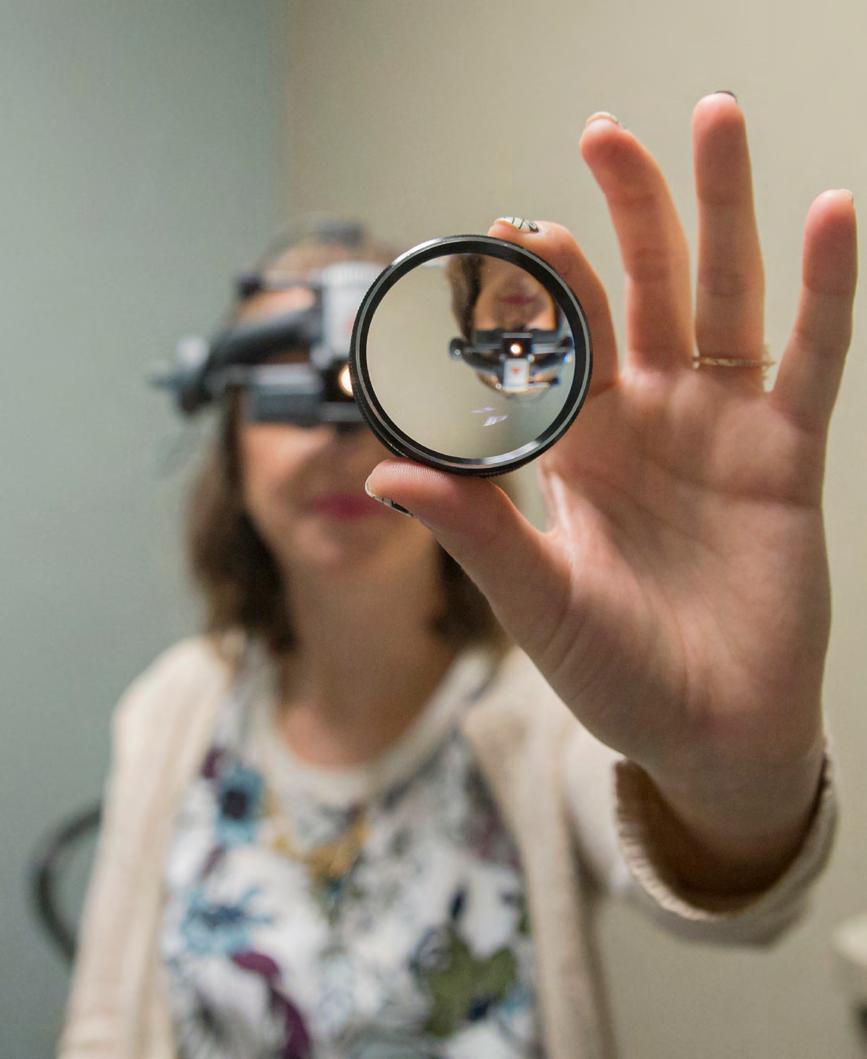
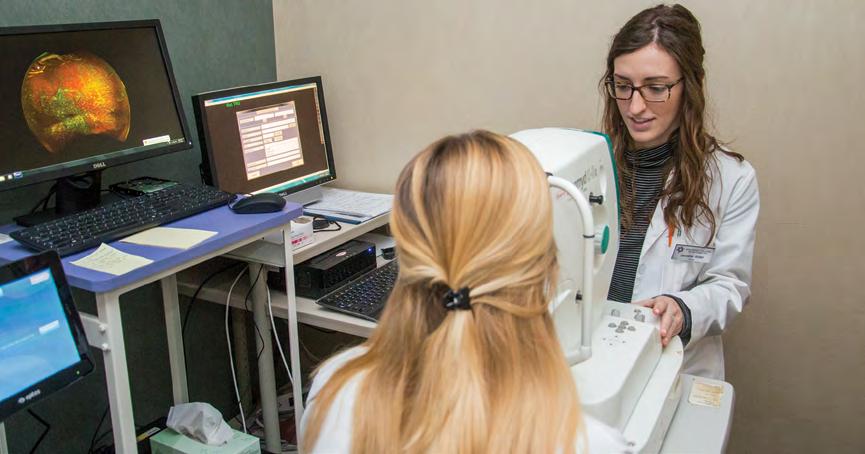
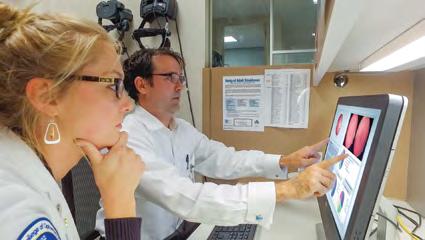
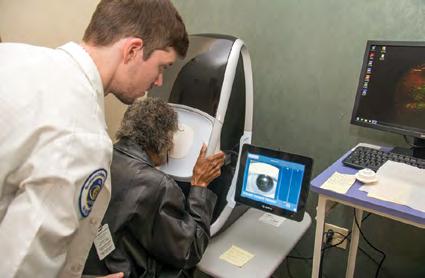

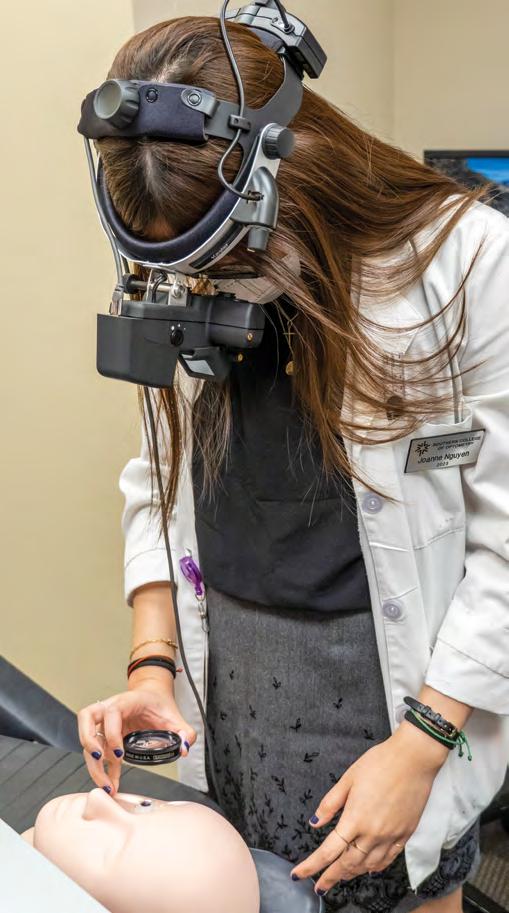
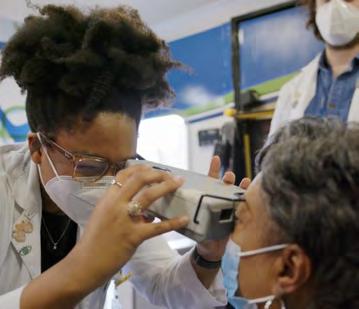
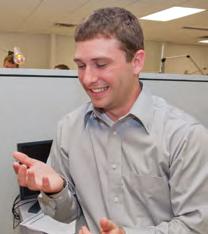
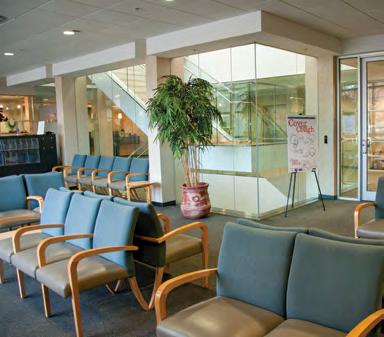

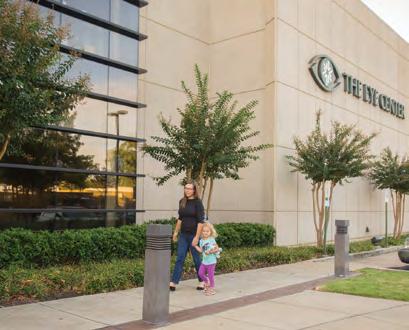

Over the past 20 years, changes to The Eye Center have kept pace with the needs of students and patients, including an expansion of the optical area more than a decade ago.

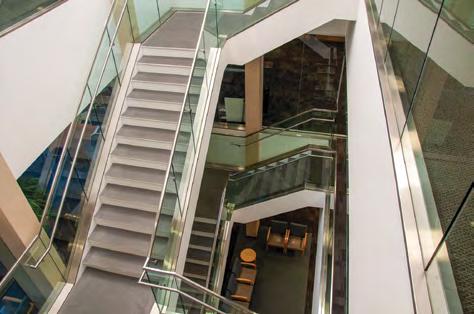
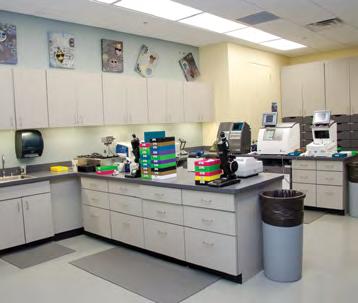
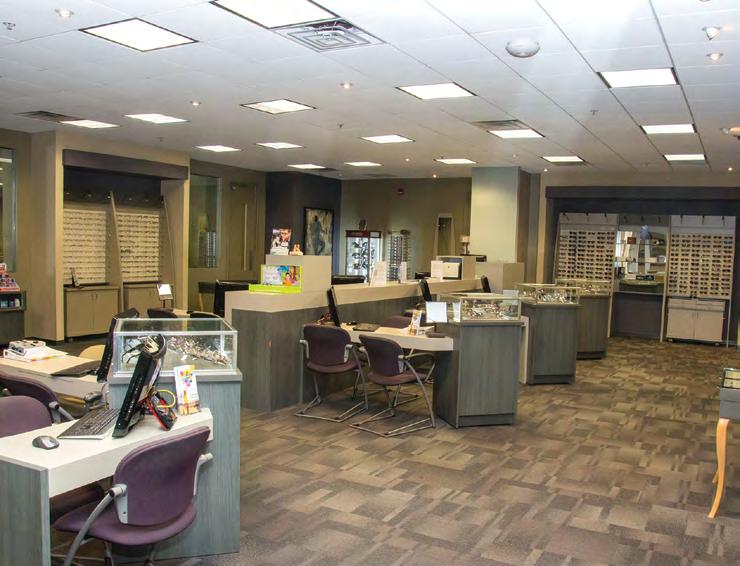

The Eye Center serves as a leading referral source within the Memphis community for low vision patients and vision therapy and rehabilitation services.

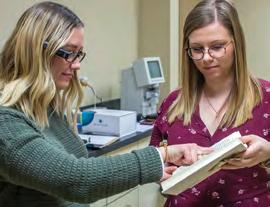
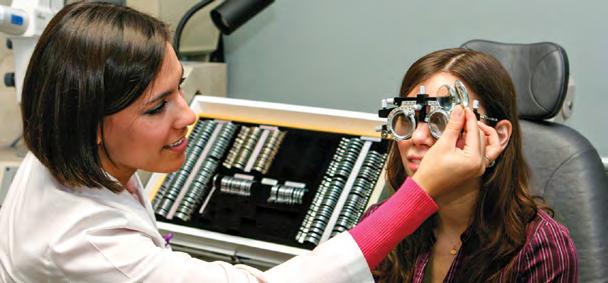

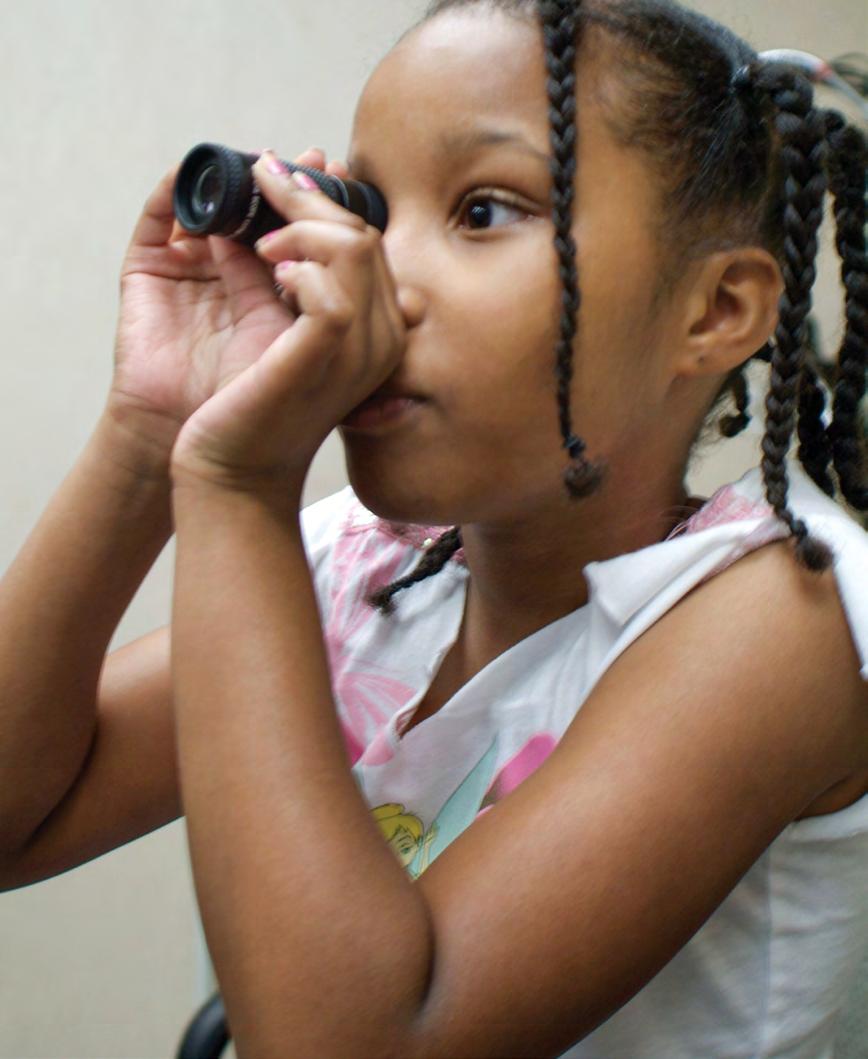
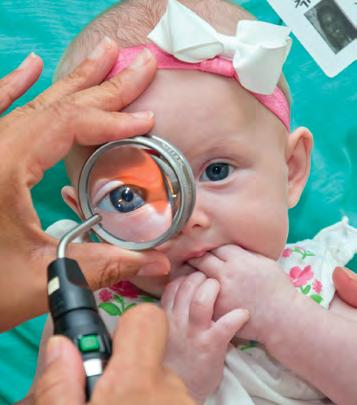
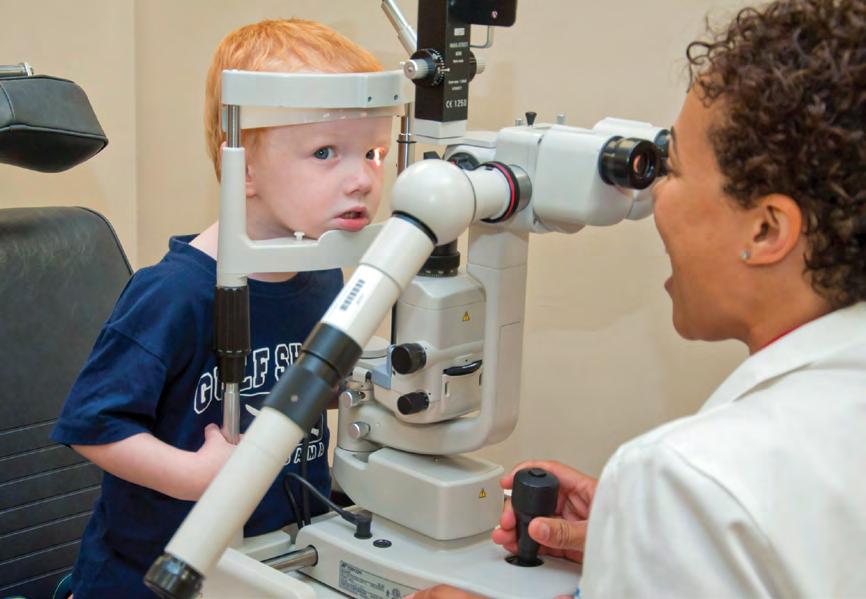
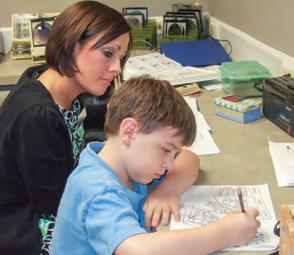
The Eye Center serves a wide variety of patient care needs, offering many opportunities to work with patients of all ages.
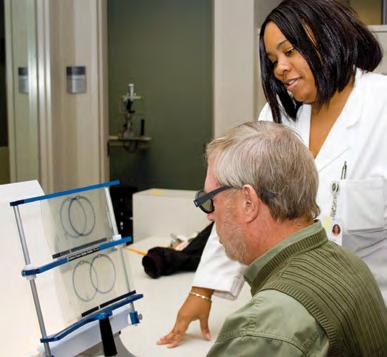
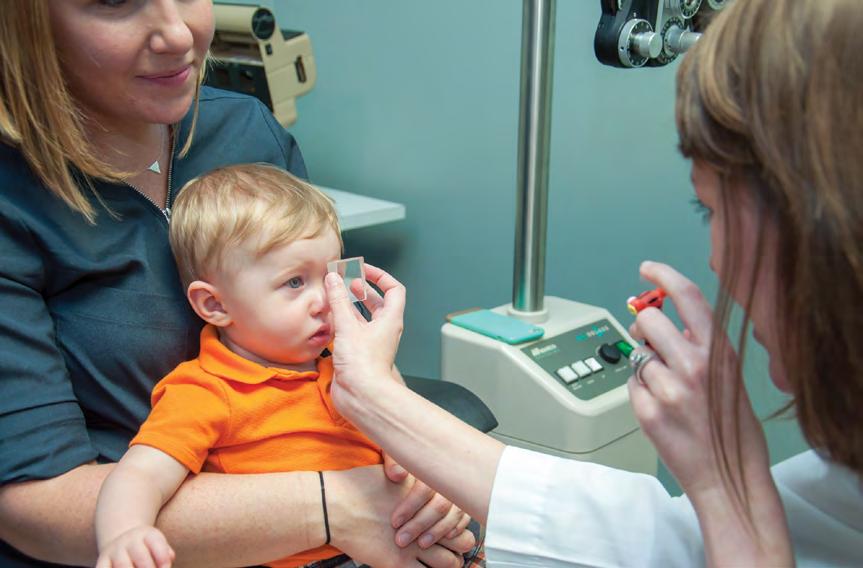

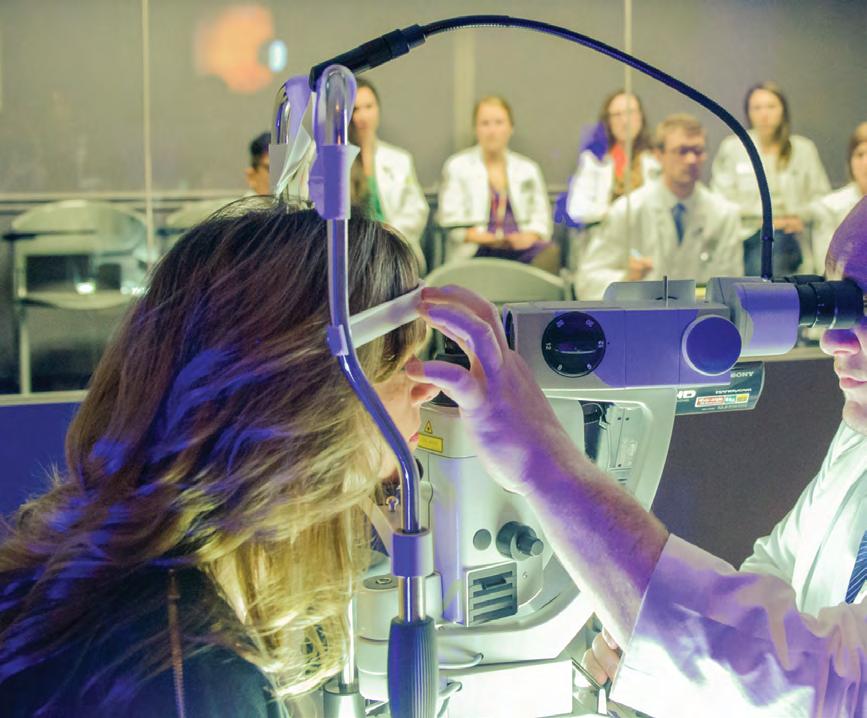
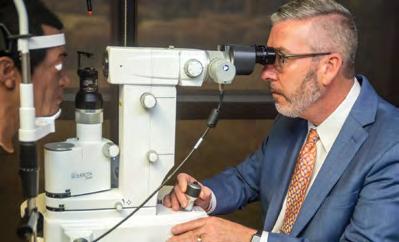
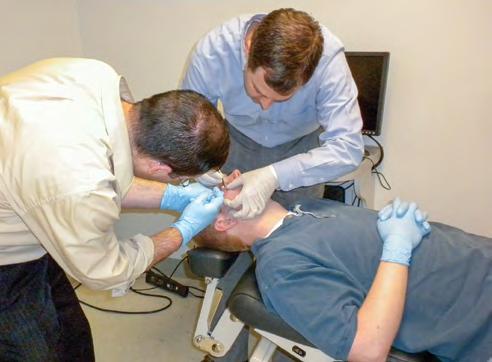
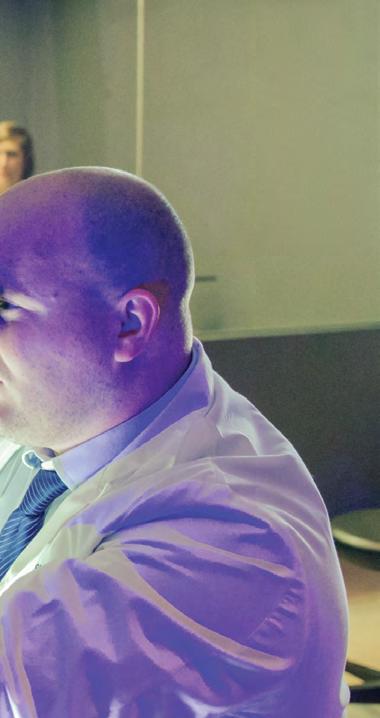
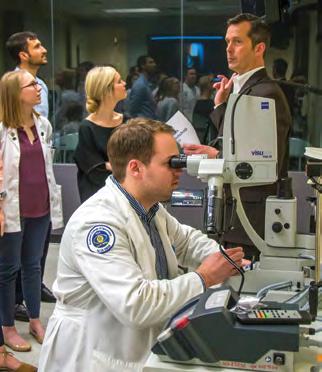

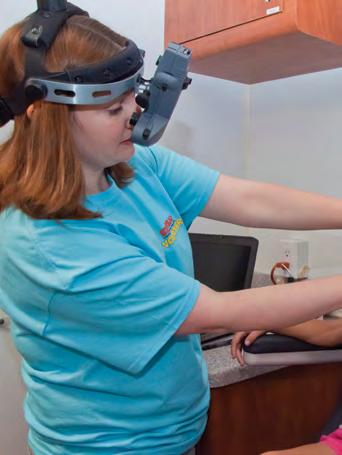

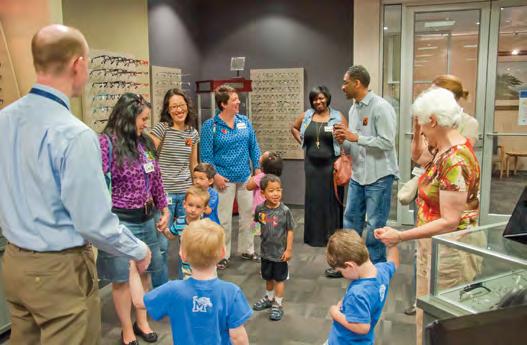

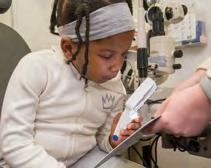
In addition to drawing patients from throughout the community, The Eye Center is also represented in the community through service events and the MobilEYES unit which was dedicated in 2015.



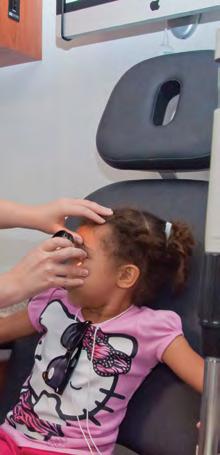
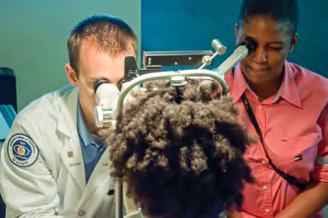





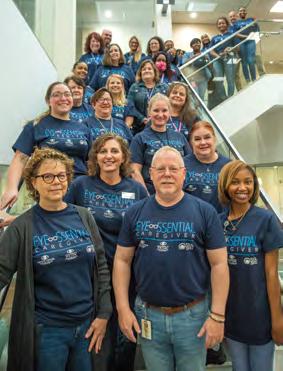


The Eye Center’s dedicated faculty, staff, and residents join in celebrating the successes of our interns, including holiday celebrations and even VIP patient visits, such as a 2009 visit by Academy Award-winning actress Kathy Bates when the Memphis native needed eyecare during a visit to her hometown.
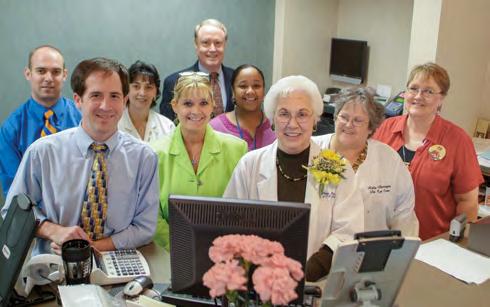
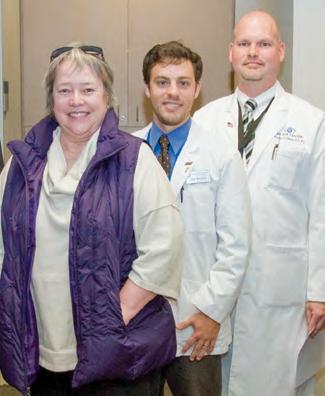
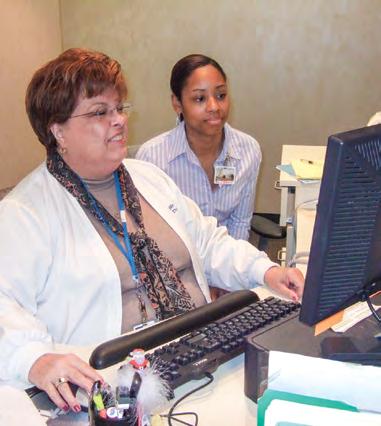
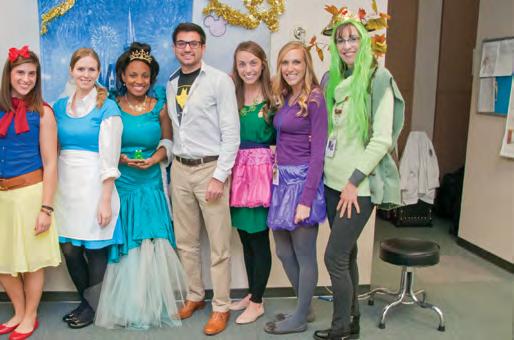
Since its opening 20 years ago, The Eye Center has served more than 2,500 SCO graduates. Tens of thousands of patients have received top quality eyecare. Alumni who experienced The Eye Center when it first opened would recognize changes that have occurred through the years. The advent of Electronic Health Records freed up space used for charts to allow the Optical area to expand several years ago. A surgical suite and observatory now occupies a space used by interns for studying in the facility’s early years.
A catastrophic water event four years ago resulted in renovations to lower areas that were affected. Additional renovations are underway to keep the facility in top form
for the benefit of our clinical interns and patient care. No matter the technology or facility changes, The Eye Center’s reputation for providing an outstanding clinical education continues to be a big draw for students. According to James E. Venable, OD ’89, Vice President for Clinical Programs, interns receive as many as 340 unique
patient encounters during their third year at SCO. The fourth professional year clinical internship yields as many as 480 encounters. Added to externships, community screenings, and other opportunities, the average SCO graduate today can anticipate between 2,600 and 2,900 total encounters within SCO’s Clinical Programs.
SCO’s graduates benefit from experienced and dedicated faculty, a diverse patient base, and The Eye Center’s commitment to quality care. In their own words, alumni from the last 20 years, including several who now serve on SCO’s faculty, share their thoughts on their clinical education at The Eye Center.
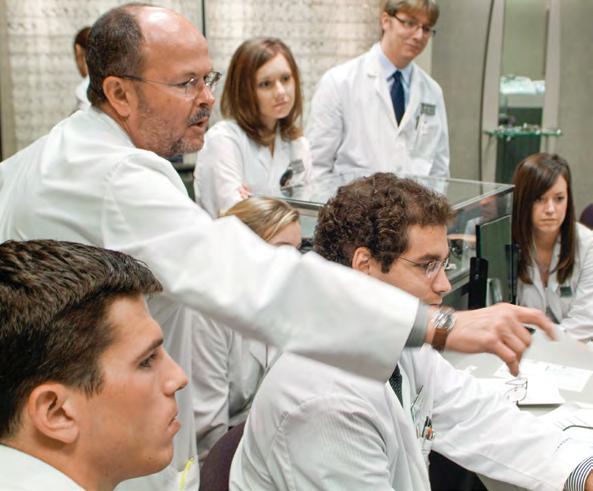
The contrast between the old and new clinics was remarkable. The Eye Center felt bright, modern, and spacious. Seeing patients in such a beautiful and professional environment helped set the expectation that once we graduated, we were going to be ready for success.
Having been part of the last class to see patients in the Tower Clinic, and the first class of residents to see patients in The Eye Center, my first reaction to it was “WOW!, what a first class facility, and future generations of SCO students will not have a finer, more cutting edge clinic in which to further their clinical education and skills.” Its design has stood the test of time for two decades now, as it continues to provide students, staff, and patients alike the opportunity for unsurpassed eye care encounters.
Bill Ballinger , OD ’05When The Eye Center was first constructed, it was clear there was a commitment to clinical excellence from SCO to match the established didactic excellence. There was a commitment to the students to provide the very best clinical setting to learn and grow clinically; to best prepare them for post-graduate practice. The equipment, diverse subspecialty exposure and small student-to-clinical doctor ratio all provided the ideal opportunity to be prepared for real world clinical practice. Every time I return to campus to visit, it (almost!) makes me want to be a student again!
I remember being excited as my class, the Class of 2005, was the first to do all of our clinical work in the brand new Eye Center. I remember being proud that it was known as the largest eye clinic and perhaps the largest single specialty clinic ever. I
believe training and learning in the best facility that any optometry school offered made me want to strive to offer a large and state-of-the art facility in my own private practice after graduating.
Jennifer Jones , OD ’06 Associate ProfessorMy class (2006) was the first class to have The Eye Center all four years of school.
I remember being impressed with the size of the facility, state-of-the-art technology, as well as knowing I would be serving a diverse patient population. All of these components help our students be very prepared to practice after graduation.
I have been fortunate enough to teach in The Eye Center for 15 years now! It has been wonderful to be a part of the education of my future colleagues.
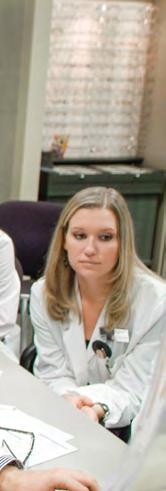
In 2003 when I first came to SCO and toured The Eye Center, what was most
impactful to me was the size. I was excited to be among the first classes to utilize the updated equipment. While SCO has a variety of clinical settings, The Eye Center is the hub for all patient care needs. Students have access to all aspects of optometric care through the variety of clinics, Pediatrics, Vision Therapy, Vision Rehabilitation, Contact Lens, Advanced Care Ocular disease, in addition to Primary Care. Having dedicated space for all areas of specialty care, coupled with the extensive diagnostic technology and high patient demand for services, is the perfect setting for a faculty member to practice to the fullest scope as well as teach students to achieve their potential as optometric physicians.
I had the opportunity to visit other schools prior to visiting SCO. I remember how impressed I was with the uniqueness of TEC at SCO. Not only did it provide full-scope care to the Memphis community, but it did so on the same campus as our educational facilities. Being from a small town in Georgia, this provided me with a sense of closeness allowing me to grow in experience in a relaxed and nurturing setting. My time at TEC cultivated my knowledge and understanding as well as my comfort-level of direct patient care.
I vividly remember touring The Eye Center during the interview process and when I was accepted, I was thrilled that I was going to be able to learn from the best in the field, in the largest optometry clinic I had ever seen. Every time I evaluate a cataract, refract a patient, or fit contact lenses, I know I am making the best decisions for my patients because of the expert lessons I learned while I was a student in the clinic, and I am so honored to be able to pass those same lessons on to my students now, 13 years later!
I was really impressed touring The Eye Center in 2005. At that time, TEC was one of the newest optometry school teaching clinics in the nation with all the bells and whistles. The exam rooms were designed to be teaching facilities with different subspecialities. TEC helps graduates prepare for clinical success by exposing students to new technologies. The familiarity of the new technologies allowed me to transition from student to doctor much easier.
Touring as a prospective student was inspiring and solidified my desire to pursue optometry and to make SCO my home. No other school campus I toured had the same caliber of technological advancement or capacity for personal growth. The guidance of my clinical preceptors and the magnitude and complexity of patients seen,
as well as the expectation of excellence, prepared me for success and confidence in patient care.
I remember walking into it during my interview and just trying to take it all in. I was impressed with all of the technology available as well as the number of specialties offered in one place. The Eye Center really showed
me that optometry is much more than a refraction only profession and can really be integral in both saving lives and vision.
The Eye Center was one of the many reasons I chose SCO as my optometry school 14 years ago. Today, it is my distinct pleasure to teach in the same clinic. While the
color of the walls and carpet may have changed, the commitment to providing the highest level of care, newest technology, and best clinical education is still firmly embedded within it.
My time at The Eye Center, as both a student and a resident, prepared me to practice optometry to the fullest. The technology,
equipment, and knowledge able staff doctors and staff have allowed me to care for patients of all ages with numerous ocular health concerns and conditions.
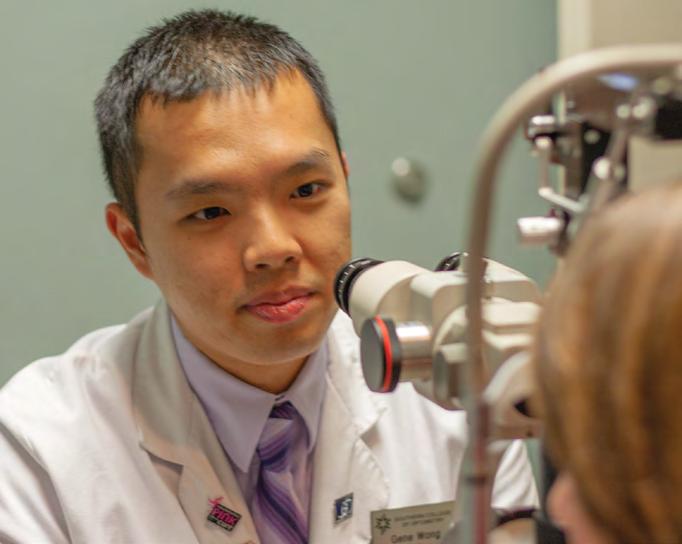
Teaching at the institution where I was once a student can be surreal at times. Now I have the privilege of working with my former professors who are experts in their field and generous with sharing their knowledge. Faculty have access to the latest technology and numerous opportunities for professional development which enables us to be at the forefront of optometric innovation. TEC remains one of the premier eye care clinics in the country.
I first toured The Eye Center privately as a prospective student visiting Memphis. While I was initially overwhelmed by the size of the building and volume of patients, I quickly realized how much I would be able to learn there as a student and how important it would be for my education.
and Brett Miller showed me
The Eye Center for the first time, I couldn’t wait to get started in such a state-ofthe-art facility. It wasn’t just the knowledge provided by the clinic, but also the opportunity to develop my patient communication skills that helped me gain confidence to succeed in practice.
Over time, I have come across individuals who were former patients of The Eye Center after informing them that I am a graduate of Southern College of Optometry. I'm usually met with excitement and pride as they tell me that The Eye Center was where they received eye care while living in the Memphis area. I can say, without a doubt, that the feeling of excitement and pride is mutual and unceasing.
The way The Eye Center and the curriculum is organized – one day you'd see patients in the contact lens clinic and the next in ocular disease –allowed me to solely focus on that particular type of care on a certain day, which greatly helped me prepare for externship rotations and practicing in my own clinic, when patients are seeking care with a combination of these needs.
While the facility is nothing short of top notch, it is the staff that truly make it special. Everyone from the receptionists, opticians, technology assistants, and staff doctors make students feel supported and create an environment that fosters safety and learning.
As a student, the clinic was very intimidating at first. Learning from faculty, working with staff, and utilizing top-notch resources made it a smooth and exceptional learning experience that I will forever cherish. For this reason, I came back to SCO after residency to not only give back but continue improving the clinical experience for students and patients alike. SCO and The Eye Center now feel like home!
As a student, I didn’t fully understand the benefit of having all eye care specialities under one roof. Now, as a doctor, I would give anything to be able to refer my patients across the hall or upstairs if there was something that needed further clinical evaluation. The Eye Center
gives patients access to clinical care that they would never be able to receive elsewhere. SCO and The Eye Center foster a learning environment through every patient encounter.
The top notch clinical education from faculty, along with the large number of difficult clinical cases, prepared me very well for practicing on my own. Another great aspect of TEC is the variety of instrumentation available. There were multiple instruments that allowed me to feel competent once I finished my education and began practicing.
The Eye Center provides a well-rounded experience for our clinical interns because we offer a variety of specialty eye care needs. Teaching in a facility that was instrumental to my education makes every day feel like a homecoming. I love the symbiotic relationship of guiding and growing alongside the next generation of exceptional optometric clinicians!
Returning to faculty at TEC has been extremely
rewarding. There is a certain level of comfort when returning somewhere familiar but being on the other end as an attending doctor gives me even more appreciation for how truly fantastic our clinic, faculty, staff, and students are. We practice full-scope optometry with appropriate diagnostic testing to provide the highest quality of care to the Memphis community.
I was looking for the optometry school with the best clinical experience.
The Eye Center was beyond anything I could have imagined: the sheer size of the clinic, the challenging patient population, the volume of patients, the
specialty departments, the 4:1 student-to-faculty ratio. All of these things demonstrate SCO's dedication to a quality clinical education. It is an honor to teach new generations of ODs within these same walls.
I was always really impressed with the size of The Eye Center. Being able to house so many different types of specialty clinics makes it easy for students to get a wide range of exposure without having to travel off-campus.
My absolute favorite area as I interviewed was the Technology suite. Coming from working in a private practice with only a visual field and fundus camera/OCT as a technician, I was excited to see the expansive amount of available technology offered in the clinic. As a student and now as a resident, I continue to love this area of clinic in addition to the downstairs optical lab. I first experienced the optical lab as a 3rd year student, and it is truly one of a kind. Witnessing the behind-the-scenes process for fabricating the perfect pair of glasses is so gratifying. Also, I feel that the experience of working with doctors who have special interests also helps to maximize each student’s learning experience and can assist students with identifying their personal areas of interest and services they want to offer once they enter the workforce.

I was nervous starting clinic rotations because I was doubtful in my skills outside of classroom labs, but now I look forward to my clinic days! I’ve learned how to utilize my resources efficiently and apply the topics and skills we’ve learned in our didactic courses firsthand. I have seen the classic textbook images of diabetic retinopathy, hypertensive retinopathy, and glaucomatous ONH changes which were defining moments for me in clinic. It has helped me become much more comfortable with myself as a student doctor and providing the best care that I can in my role.

Most OD s can remember their very first patient care encounters. For 20 years, The Eye Center has provided those memories for our alumni. in their own words , here are current third-year students from sco’s class of 2024 about what they experienced this past summer during their first patient encounters at SCO.
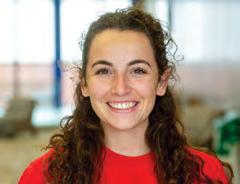
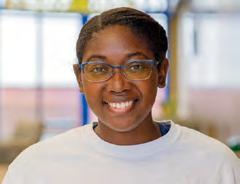
My very first day of clinic I had the sweetest 15-year-old patient coming in for a comprehensive eye exam. What I was not expecting was the wild ride she was about to take me on. She was born with bilateral retinal detachments, and she has been walking around uncorrected for two years and is a large anisometrope. On pupils and anterior segment, I discovered a dense corneal opacity that left her BCVA 20/50 in that eye. I performed a Seidel test to assess the integrity of the opacity, and just when I think I’m ready to dilate, she had narrow angles; so that meant gonioscopy! On BIO I saw chorioretinal scarring 360 from her retinal detachment repair as an infant. My staff doctor said, “Let’s take a photo!” which required me running to technology to operate the Optos that I had very limited exposure to.
Starting in TEC was very nerve wracking for me as it was the time to apply all my didactic knowledge and skills I had been learning over the past two years. I did not realize how empowering working in the clinic would be for me. I have been able to help diagnosis different diseases like glaucoma, retinal scarring, and many types of diabetic retinopathy, including proliferative diabetic retinopathy. I felt such joy to finally help these patients get their health on track, whether that be by
My very first exam as a third-year intern required me to do almost my entire first two years of training on that one patient!
And I have been learning more and more each day I’m in the clinic.

finally getting them a treatment to start their healing or making that life changing referral to a retinal specialist. It has been so special to me to be able to impact so many lives in the Memphis area. Through all this, I have been able to learn so much from all my staff doctors which has instilled so much confidence in me as a student doctor.
I look forward to all the knowledge I will continue to learn over the next two years and in my future career as an optometrist.

In the Adult Primary Care clinic, I was able to see a new patient, around 40 years old, who was just coming in to the clinic to get a new glasses prescription. During my examination, we were able to dilate his eyes to examine his retinas, and found evidence of uncontrolled hypertension. He was unaware of this as his vision was normal, but we were able to direct him to his primary care physician in order to get his blood pressure under better control. It felt good to be able to provide care to a person who did not even know anything was wrong!
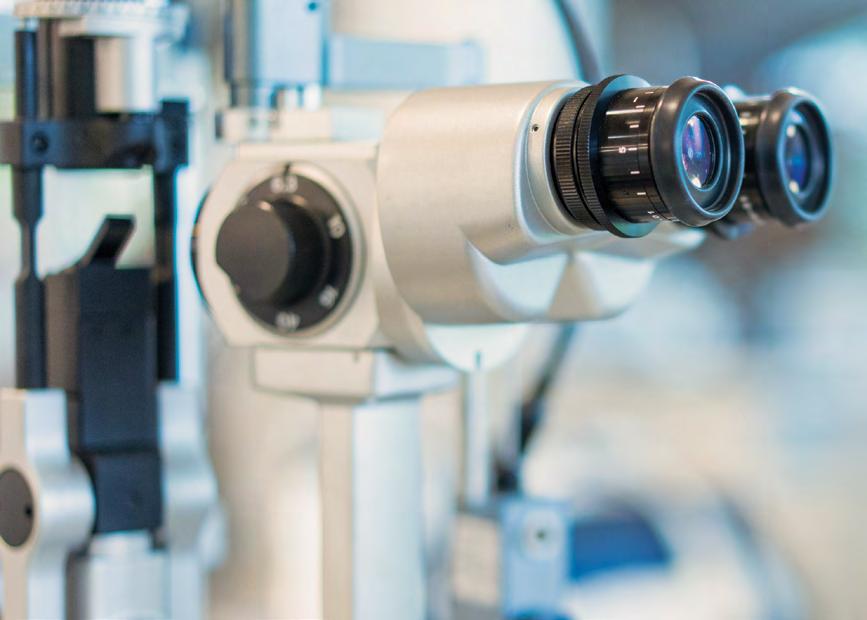
My first vision therapy evaluation was a TBI patient who came in with complaints of visual fluctuations and fatigue. I was working with Dr. Patrick Fiddler, who had lectured for our class on the benefits of tinted lenses on symptomatic TBI patients. This is relatively new research and I was uncertain of how it worked, but when we placed a blue tinted lens over our patient’s eyes, she was suddenly able to read the 20/20
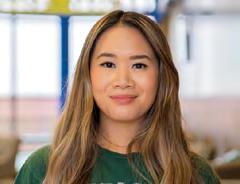
line without straining! It was enlightening being able to see everything that we had learned in class come into play in clinic. After that clinical experience, I decided to participate in Dr. Fiddler’s research on tinted lenses for symptomatic patients with a high Brain Injury Vision Symptom Survey (BIVVS) score in order to gain more knowledge on the benefits of tinted lenses. I’ll admit that vision therapy was not my favorite class during the time that I was taking it, but being present in the vision therapy clinic is a lot more fun than I had expected!.
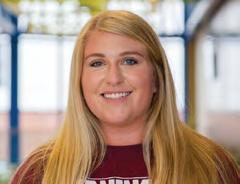
One of my first patients in Teen Clinic was a college student who had strabismus surgery done at an atypical age of 10 years old. With the surgery being done so late, her left eye was amblyopic (best correct distance acuity was 20/50 in the left eye) and possessed a constant hypertropia. She complained that her current glasses were now blurry with
all the near work she’s been doing, so we gave her an updated prescription but left her previous prism alone. Although it was a fairly straightforward exam, it was so nice to sit and connect with her about the medical field. She was planning on studying nursing, and I told her all about my amazing experiences in undergrad and at SCO. I definitely bragged on the field of optometry a bit! Although I love treating all the diseases in Adult Primary Care, it’s so much fun hanging around the younger patients and you truly never know what you’ll get.
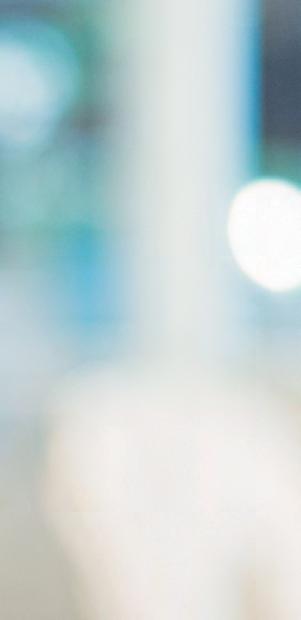


I was very nervous for my first patient, especially when she was in a poor mood from the start. Understandably so, as I found out she recently had a house fire that her pet dog died in, as well as a recent death in the family. Sadly, we had more bad news for her by the end of the exam. She had a history of cancer, and was referred to a specialist for multiple cysts that looked cancerous. She had visited an OD the week before, but said she did not understand, and so came to SCO for a second opinion. However, even with the poor outcome, the patient was appreciative of our treatment and explanation about her situation. I was happy to finally apply what I had learned at SCO to make a difference in someone’s life, and knew I had made the right choice in coming here.

Although I was very excited to finally be seeing patients in the clinic, it would be an understate ment to say I was nervous once I had the patient sitting in my exam room chair. I would have never thought my first patient would be someone with histoplas mosis! I had just learned about this disease the previous semester and was not expecting to see it so soon, especially not in my first patient. As a new clinician, I was
afraid since I did not yet know the nature of what I was seeing in the back of my patient’s eye was. Fortunately, I had the guidance of my staff doctor, who took the time to explain the findings and really help me learn. It was an unforget table first day in clinic. I was very lucky to have such a great patient, an amazing staff doctor, and to be able to see something so out of the ordinary.
I was happy to finally apply what I had learned at SCO to make a difference in someone’s life , and knew I had made the right choice in coming here.
My first patient was a very sweet older lady who had complaints of dry eye and blurry vision. Her case was a simple one of advanced cataracts. Even though I was very nervous and I spent longer than I would have liked to finish,
the exam went very smoothly. We explained her options and discussed cataract surgery, and at the end she asked me for my name so that she could request me for future exams. I had a great first exam experience and my staff doctors have been such a great help and support to me.
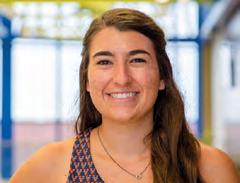
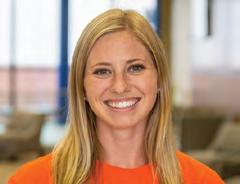
I was performing a routine eye exam on a patient there for their annual exam who had no complaints. Everything was going great, and I was so excited because I thought for once I was going to finish my exam in under two hours. Ha! I began the anterior segment evaluation of the patient’s right eye and realize that I am going to need to hold the patient’s upper eyelid in order to get a good look at the health of the corena and iris. I go to pull the eyelid up and I see that the patient has had an iridodialysis on their superior iris! After questioning the patient about any previous traumas, I found out that the patient had been hit in that eye with a slingshot before. Luckily the patient was not symptomatic with any double vision or photophobia, but we are seeing him back in one month to make sure everything looks good on gonioscopy. I am hoping gonioscopy goes smoothly on my first non-optometry student patient, wish me luck!
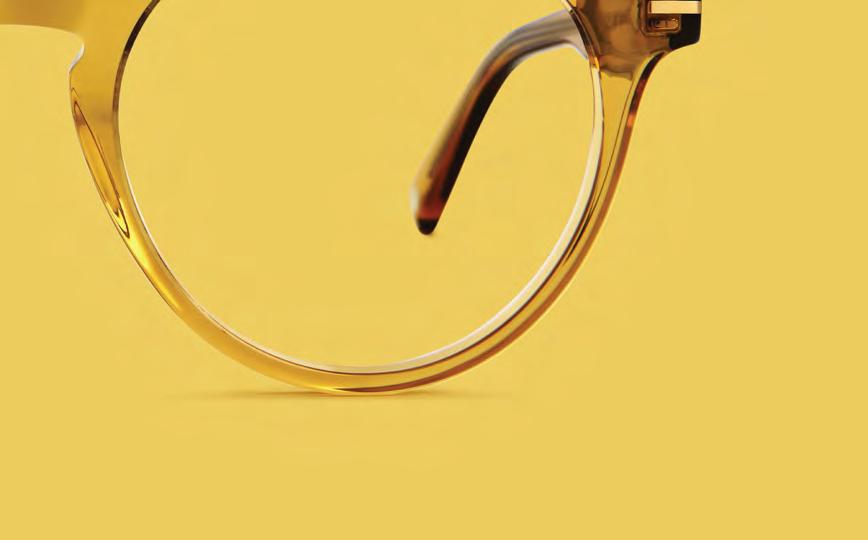
Thanks to the generosity of our alumni and support of our Board of Trustees, SCO provided a record number of scholarships and scholarship amounts to this year’s entering class. More than 80 students received scholarships valued at $ 779,000!
A $10,000 average scholarship means less student indebtedness and more flexibility to tackle practice after graduation. Thanks to all of our alumni and friends whose support makes a big difference to the education of our students!




SCO is pleased to welcome the following first-time contributors to the SCO donor ranks. Listed below are those who gave generously between April 1, 2022 and June 30, 2022.
ALUMNI
Thomas E. Woitasczyk, OD ’95

Jessica A. Crum, OD ’22
Landon H. Voigt, OD ’22 Salman A. Bhatti, OD ’22 Regan N. Stone, OD ’22
Patrick Fiddler, OD and Jacqueline Fiddler, OD Shannon Moss Audrey Waters Taylor Austin
Janelle Arjoon
John C. Whitener
Jonathan Cho, OD Scott Bolden
Mr. and Mrs. Barry Norris
Tri and Thanh Trinh
Michael and Shannon Carter
Gerald Gafford and Ginger Gafford
Sandra Rintelmann
Please contact Lauren Trowbridge, SCO’s Director of Development, at (901) 722-3339 to start making an impact on the next generation of optometrists. You may also give online today at sco.edu/give.
1961 Joseph Portera, OD, recently announced his retirement after practicing 58 years in Greenville, Mississippi. His practice will continue with Leesa H. Smith, OD ’87.
1981 James V. Cornetta, OD '81, has decided to slow down and limit his schedule to two and a half days a week. As a result, he stepped aside as an SCO preceptor after 20 years in the role. He writes: "I have been a clinical preceptor at five different optometry schools, and I'm proud to say that my alma mater, SCO, has produced some of the brightest clinicians I've had the pleasure of mentoring." Dr. Cornetta added that serving as an SCO Adjunct Faculty member tops the list of his professional life's fulfillments beyond any awards or recognition that he has received in his career.
1990 Jarrett Johnson, OD, MPH, received the 2022 NOA Founders Award and the NOF Philanthropy Award at the recent National Optometric Association meeting.
2005 Pete Wardell, OD, recently spoke to the Winnfield, Louisiana Rotary Club. He is one of the owners of the new Family Eye Clinic in Winnfield.
2011 Megan Petersen, OD, has joined Wolfe Family Vision Center in Iowa.
1984 Terry Tucker, OD, recently received the Ed Walker OD of the Decade Award from the Florida Optometric Association.
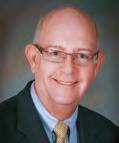
1987 William E. Conn, OD, shares that he has retired from his private practice of 35 years in Brentwood, Tennessee.
1992 Pete Simmons, OD, recently visited campus with his family for the first time since he graduated 30 years ago. The family lives in Utah.
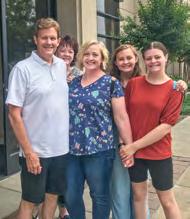
1995 Chad Overman, OD, has been appointed Chief Operating Officer of 20/20 Now.
2000 DeAndre Monique Carr, OD, recently was re-elected secretary-treasurer of the Board of the Mississippi Vision Foundation.
2001 Paul Mormon, OD, and Chris Wroten, OD ’02, will host the inaugural GRT Summit in November. The meeting is intended to create enthusiasm for independent optometry with ideas designed by Drs. Mormon and Wroten. Visit www.grtsummit.com to learn more.
2015 Carissa Chambers, OD, and Kaitlin Hawkins, OD, recently competed in the Chattanooga Waterfront Triathlon together. Both did well in their age group, with Dr. Chambers placing first, and Dr. Hawkins placing in the top 33%. The two plan to compete together again in next year's Ironman Chattanooga 70.3. Dr. Chambers is an Ironman Certified Coach and writes: “I tied in my love for optometry with my love for triathlons in a custom race suit with a glasses pattern and my business logo to bring my two worlds together.”

Brittany Tounsel Wright, OD, MS, past NOSA National President, received the 2022 Dr. Edwin Marshall Visionary of the Year Award. She was also elected co-Trustee-at-Large II/ NOA Director of Student Affairs.

2018 Shanelle Jenkins Sanchez, OD, is pictured at the NOA annual meeting visiting with Drs. Cynthia Heard, Janette Pepper, and Angela Howell, OD ’90.

2022 Lauren Goettemoeller, OD, recently joined Denver Vision Therapy in Colorado.


Orman C. Campbell, OD ’49
Clifton Doucet, OD ’50 Joseph Bazemore, OD ’55 John Cecconi, OD ’55
Currie "Dean" Barker, OD ’58 Terry Nelson, OD ’64
William "Jack" Wills III, OD ’67 Harold M. Wright, OD ’68 Harvey Ohriner, OD ’69 Robert M. Malatin, OD ’72 Robert Grand, OD ’74 Julian Crowder, OD ’78 Donald J. Bailey, OD ’87
Tifton Covington, OD ’91 Donald E. Beyers, OD ’93 William D. Hammer, OD ’95
HOWARD FLIPPIN, OD ’59, died September 6. Dr. Flippin served on SCO’s Board, including as Chair, received SCO’s Lifetime Achievement Award, and was well-known for his service to Arkansas optometry, ARBO, and the profession.

2017 Emily Eisenhower, OD, and Amanda Dellinger, OD ’08, were among the representatives from the Tennessee Association of Optometric Physicians who recently traveled to Capitol Hill to advocate for the profession.
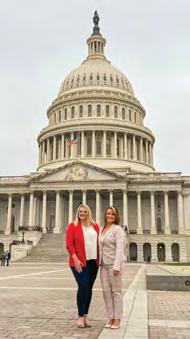
Aaliyah Cole, OD, and Rachel Williams, OD ’22, are among SCO's six new on-campus residents. Others include Drs. Beth Katz, Marija Novakovich, Mitchell Kanellis, and Jacqueline Fiddler.
SCO President Lewis Reich, OD, PhD, joined Vice President for Institutional Advancement George Miller and Director of Alumni Engagement Beth Fisher in hosting SCO legacy alumni and their daughters from our new entering class at a Memphis Redbirds game. Pictured in SCO’s suite are Elise Daiber, ’26, mom Amy Daiber ’92, and dad Bryan Daiber (Elise’s brother Trent is a 2021 graduate); Jill Yates, ’26, dad Alan Yates, OD ’94, and mom Candace.
SCO alumni are welcome to join us at a game next year during visits to Memphis; just let the Office of Institutional Advancement know when you’re in town.
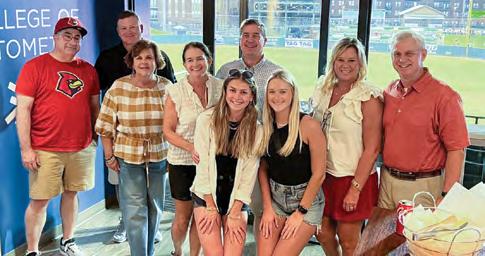
The Office of Institutional Advancement is pleased to announce that newlywed alumni can receive SCO-themed champagne flutes. Just email bfisher@sco.edu a photo with details to share about your wedding, and we’ll be glad to mail you this gift to celebrate your nuptials!
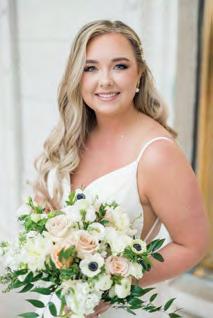
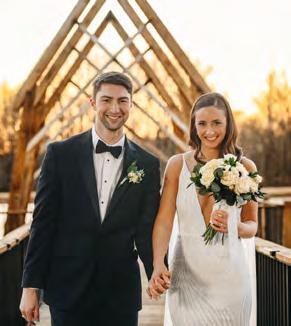

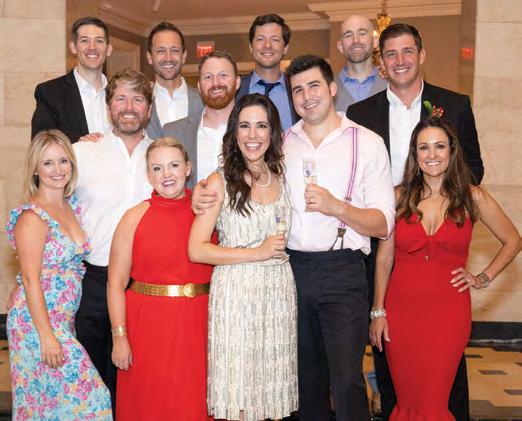
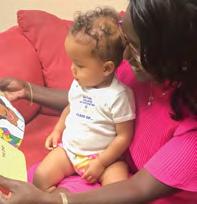
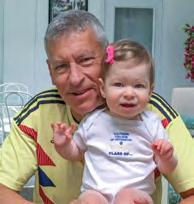


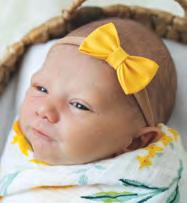


Six SCO faculty members received promotions July 1:
Elyse Rayborn, OD ’20, recently joined SCO's faculty as an instructor. After graduating from SCO, she completed a two-year combined residency in Primary Care at SCO with an MBA from Christian Brothers University.


Former resident Patrick Fiddler, OD, now a faculty member, received the Dr. Oscar Marquardt Vision Therapy Research Fellowship Award previously delayed by the pandemic. Terry Marquardt, OD '74, presented the award.
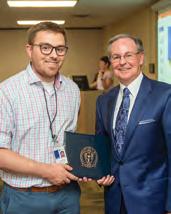
John Mark Jackson, OD ’99, wrote about GP Torics for his GP Insights column in the August edition of Contact Lens Spectrum
Chris Lievens, OD, along with Drs. Catherine Hogan (’17), Laurel Kelley (’18), and Mike Christensen, wrote an article about olopatadine eye drops for ClinicalandExperimentalOptometry’s July 2022 issue.
Janette Pepper, OD, received the 2022 National Optometric Association’s Dr. Betty Harville Educator of the Year Award and was elected co-Trustee-at-large II/NOA Director of Student Affairs.

Lewis Reich, OD, PhD, received the AOA President’s Award at the American Academy of Optometry meeting.
Chris Borgman, OD, wrote a case report about band optic atrophy for the July 2022 issue of PrimaryCareOptometry News
Patricia Cisarik, OD, PhD, received SCO's Above and Beyond Award for her work in research related to IRB protocols. SCO recently had an unannounced FDA audit and was found fully compliant with standards thanks to Dr. Cisarik's work.



Dan Fuller, OD, was recently appointed to serve as a Council member of the Accreditation Council on Optometric Education (ACOE) for a threeyear term.

Pam Schnell, OD ’01, and Marc Taub, OD, wrote about the teamwork involved in referrals for the August 2015 issue ReviewofOptometry
Beth Sparrow, OD ’98, and Wil McGriff, OD, were among the faculty members who recently joined alumni, residents, and students by volunteering at the Special Olympics event organized by the Tennessee Association of Optometric Physicians in Nashville.
Karen Squier, OD, was interviewed about cataracts and dementia risks for a story published in BestLife

At the American Optometric Association’s annual meeting in Chicago:

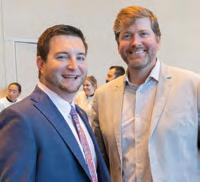
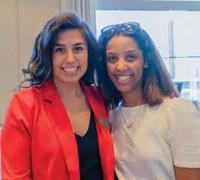



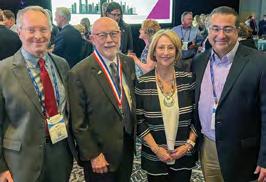
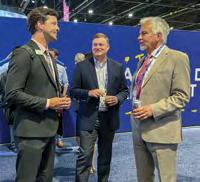
• Steven Reed, OD ’95, was elected as AOA Vice President.
• Marrie S. Read, OD ’99, MBA, Armed Forces Optometric Society, was newly elected to the Board of Trustees.

• Belinda Starkey, OD ’04, was re-elected to the Board of Trustees.
• The late Don Williamson, OD ’67, was posthumously inducted into the National Optometry Hall of Fame.
